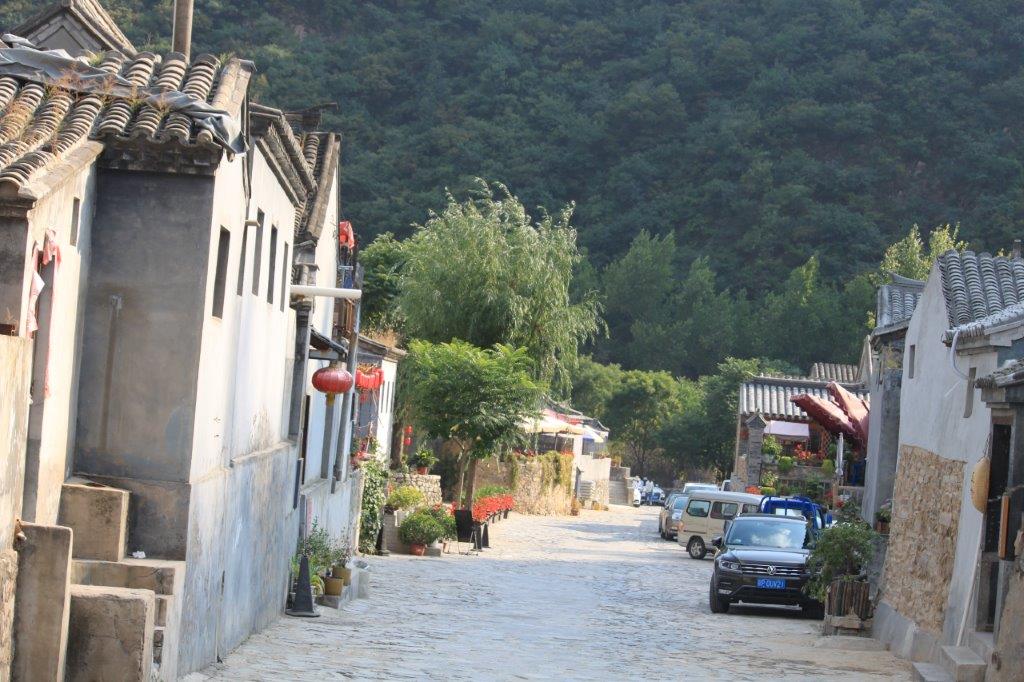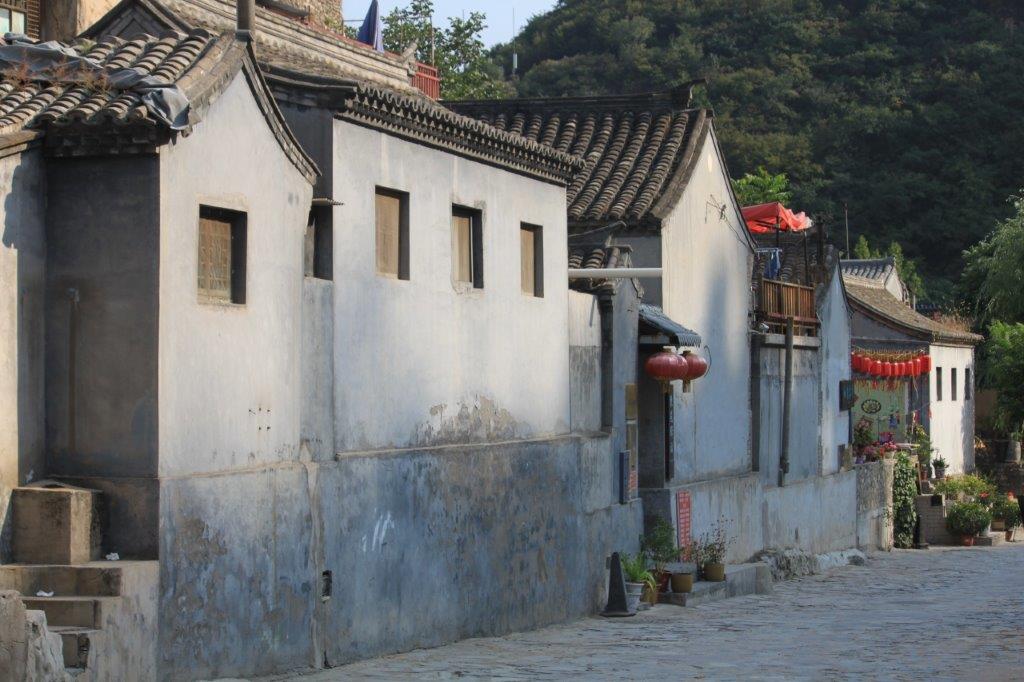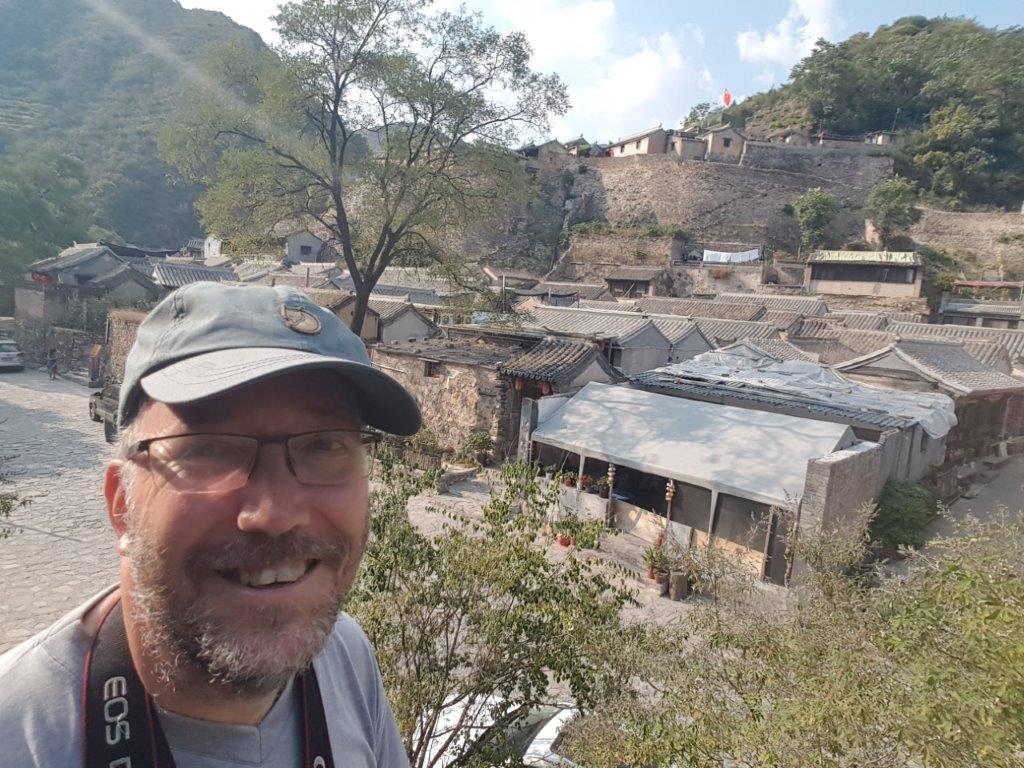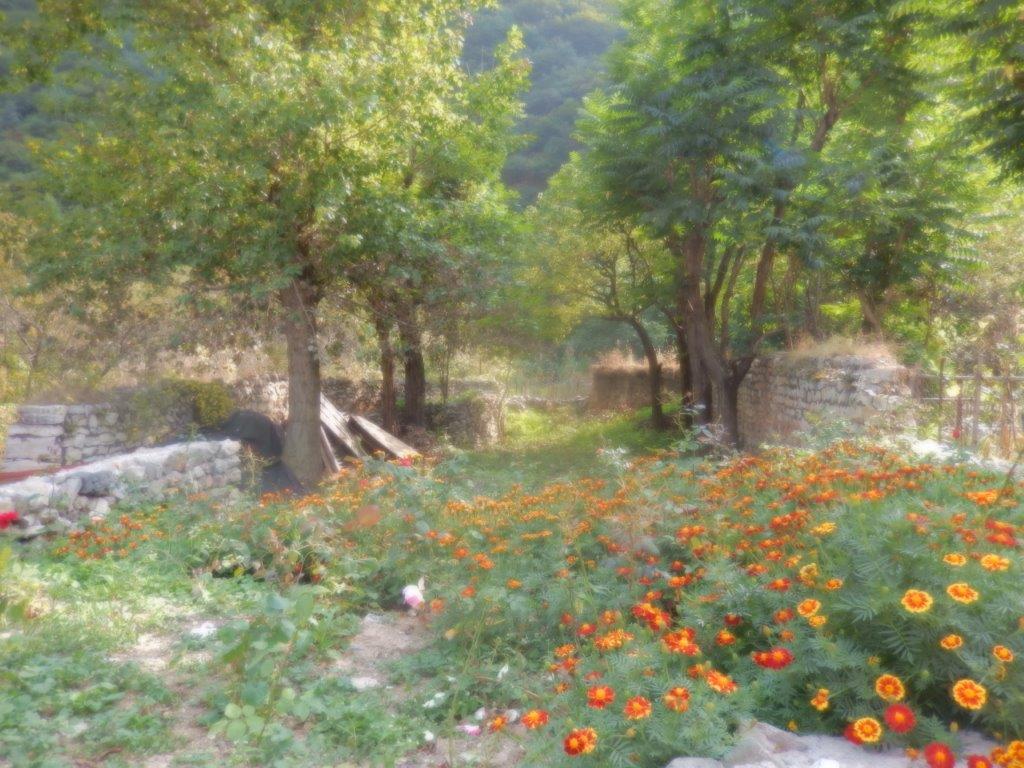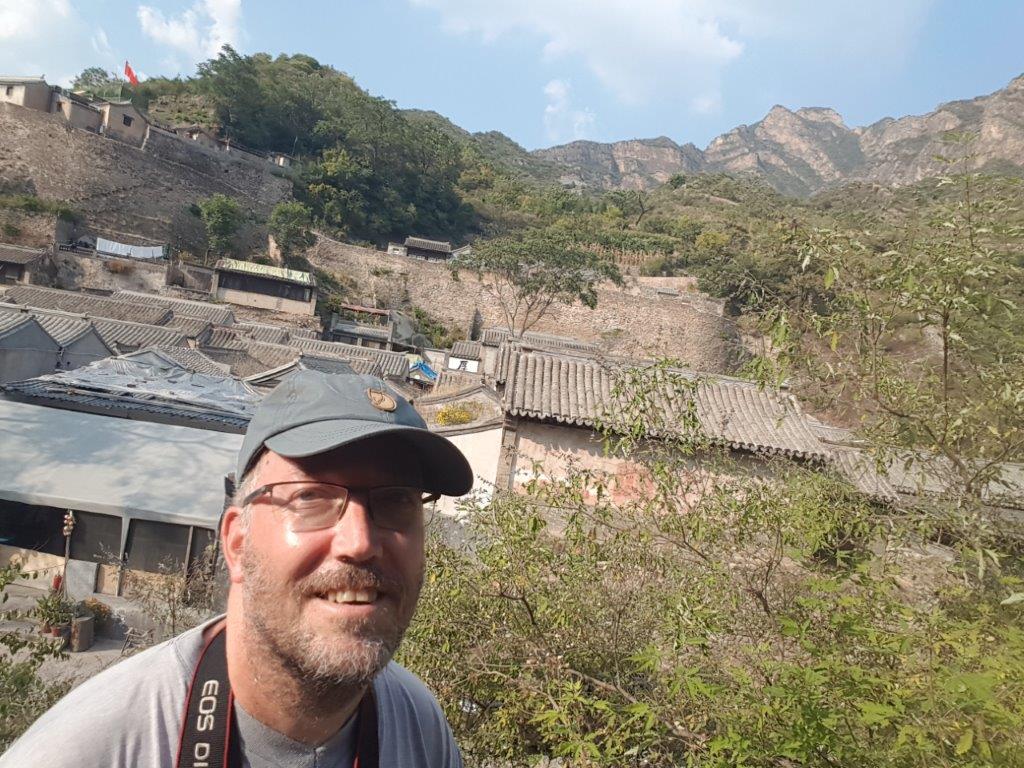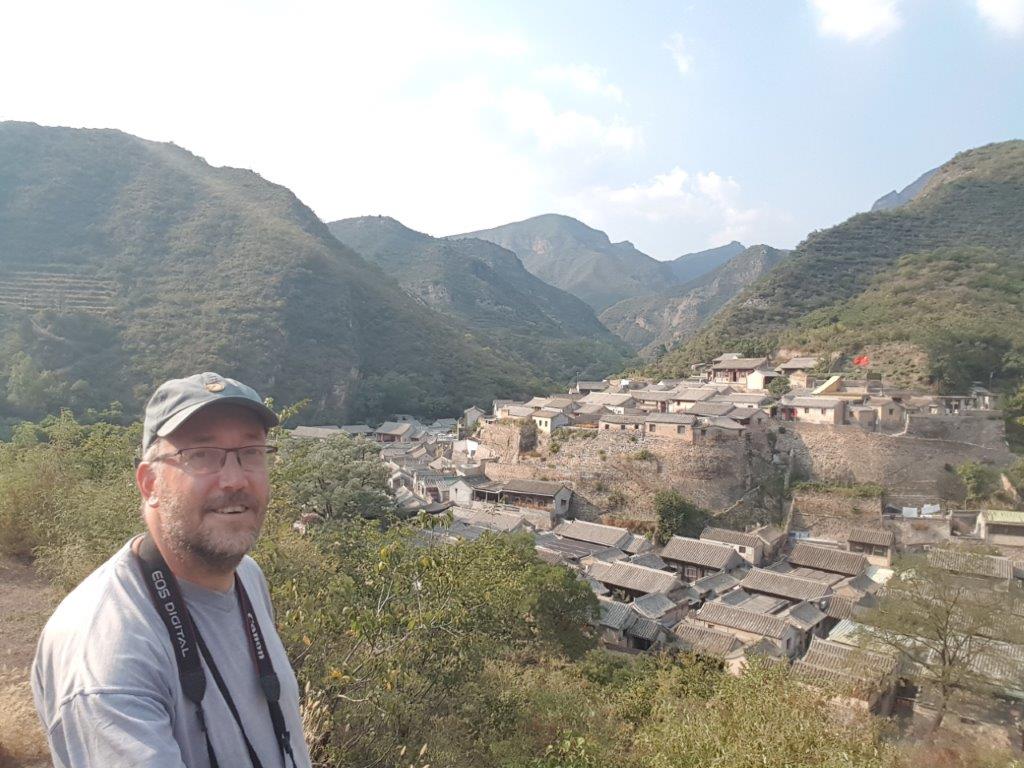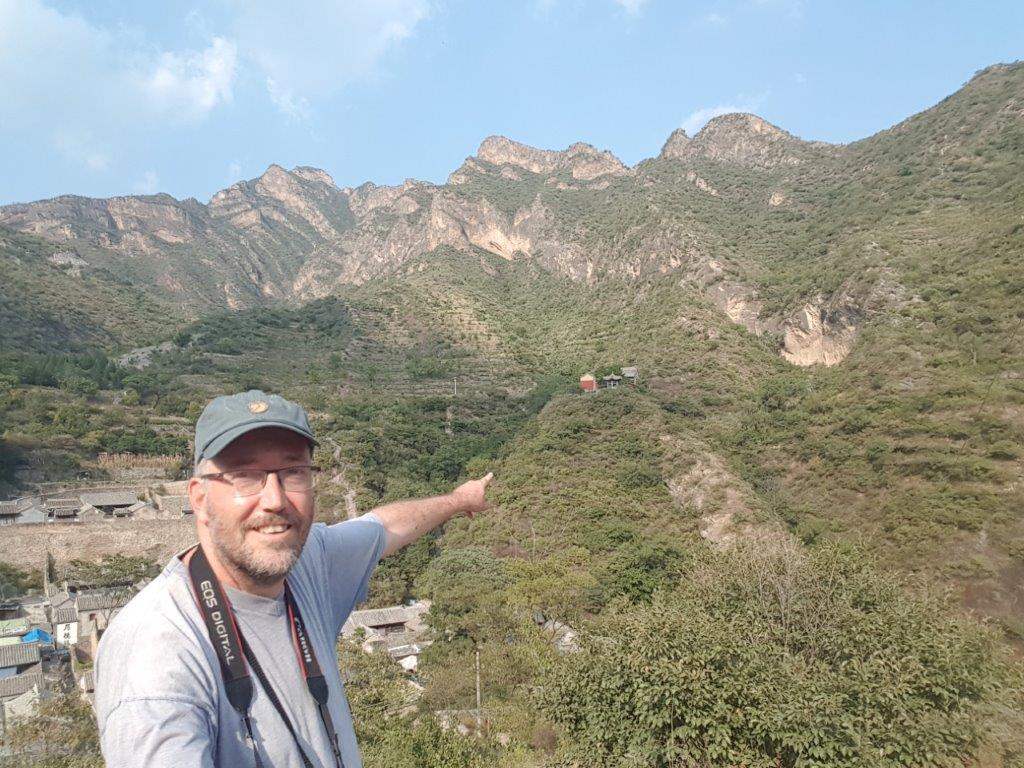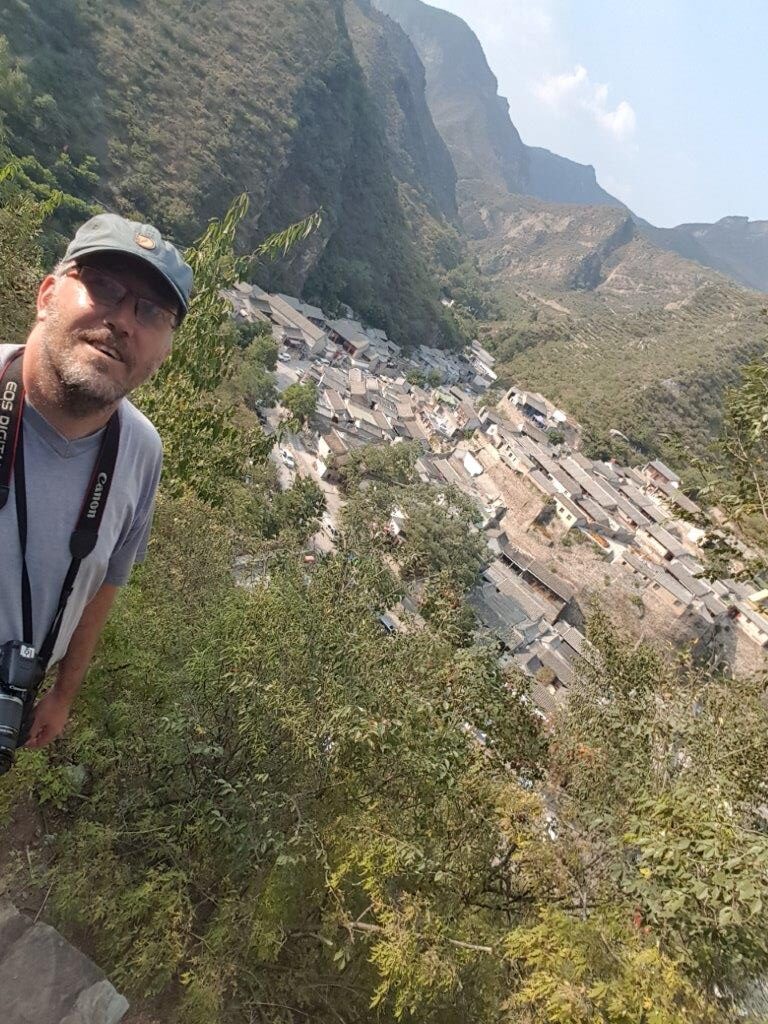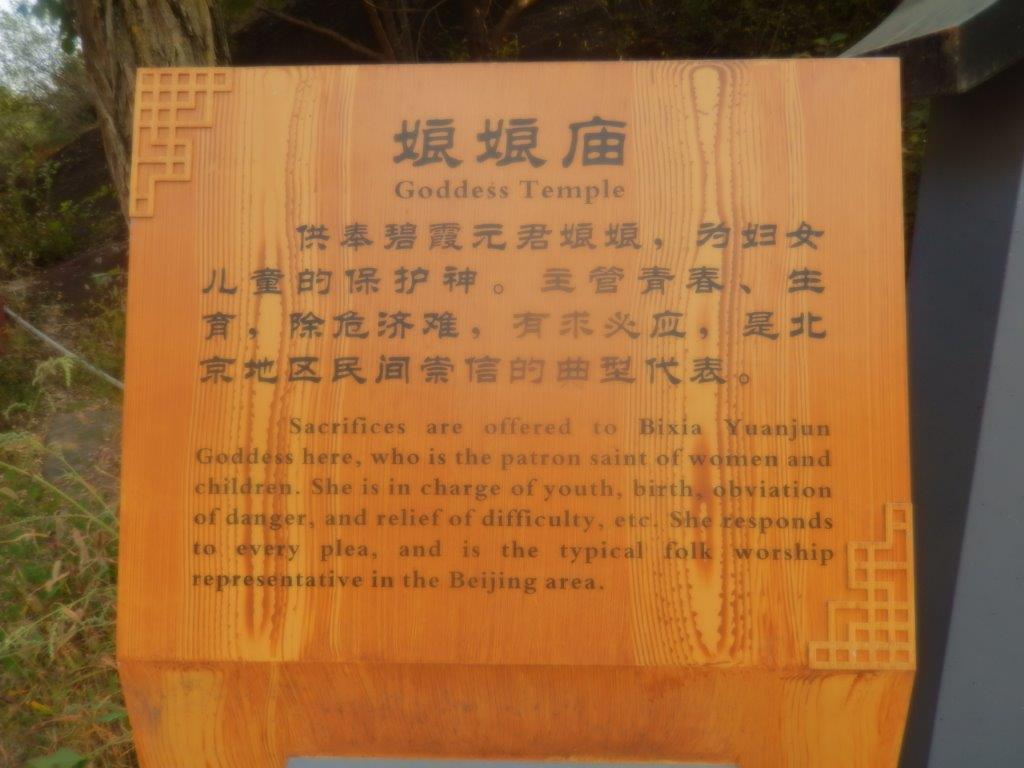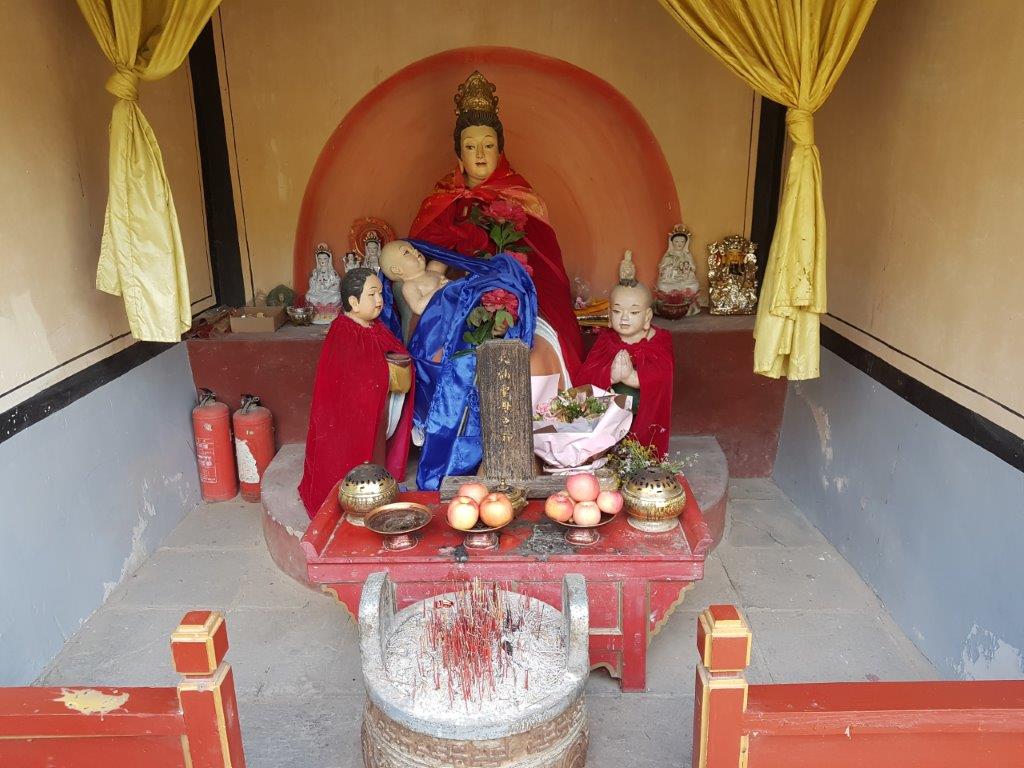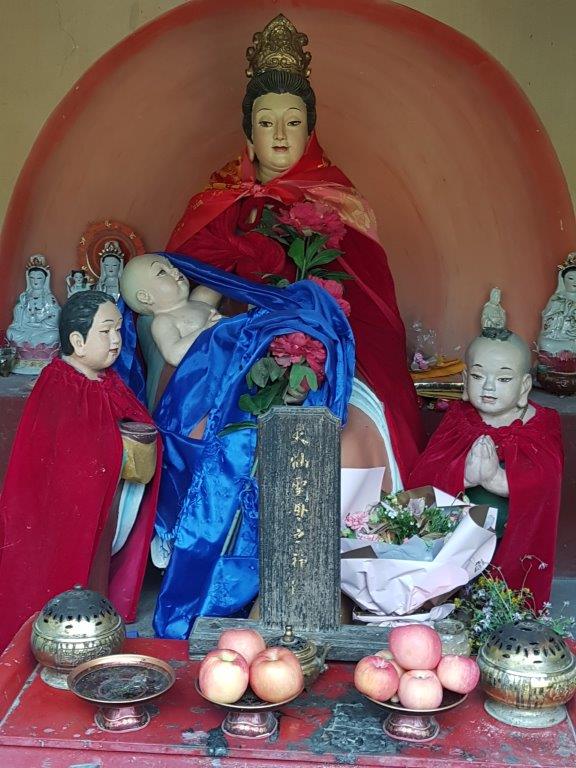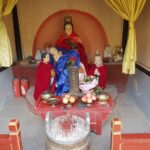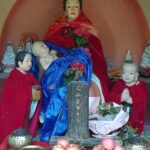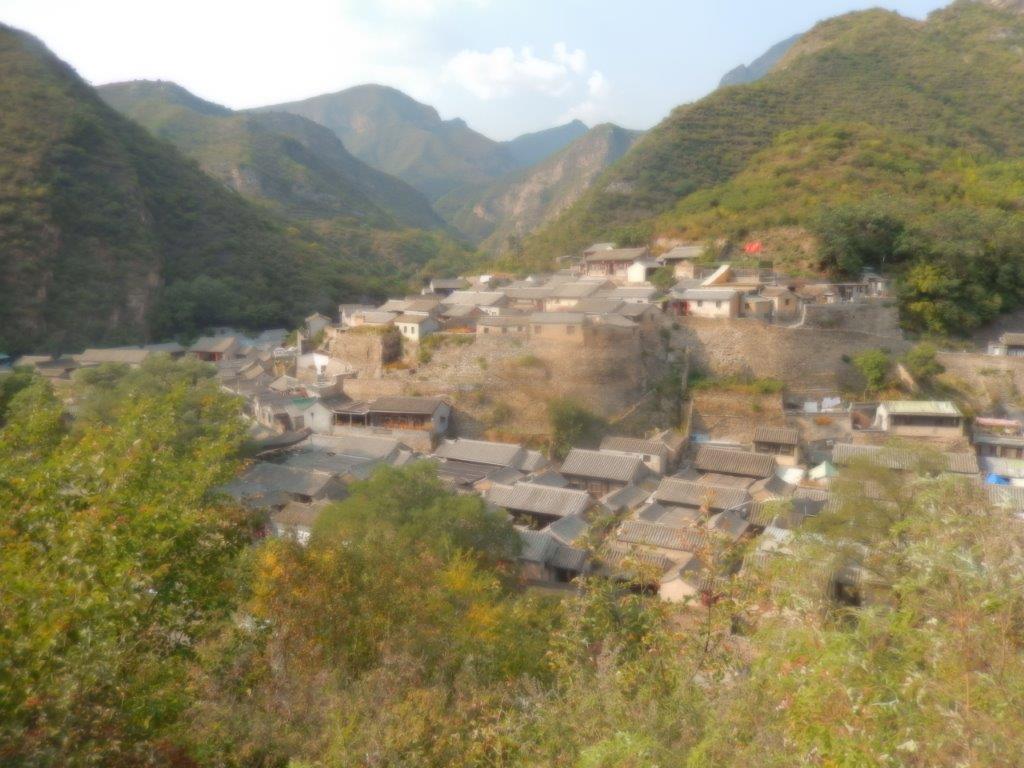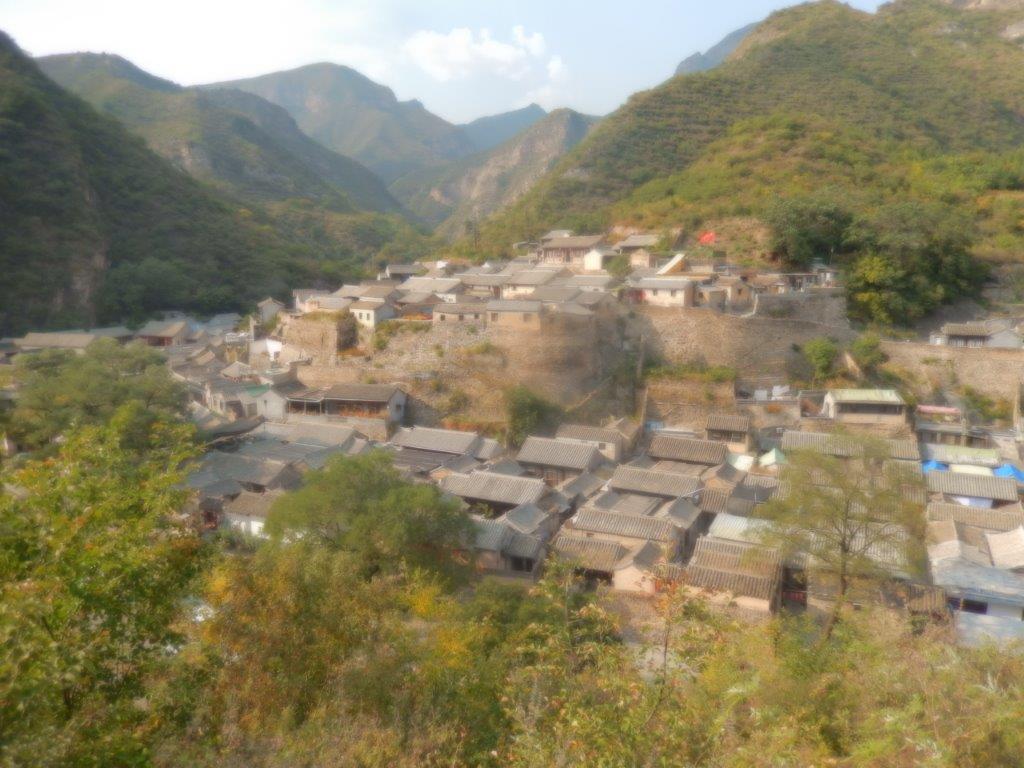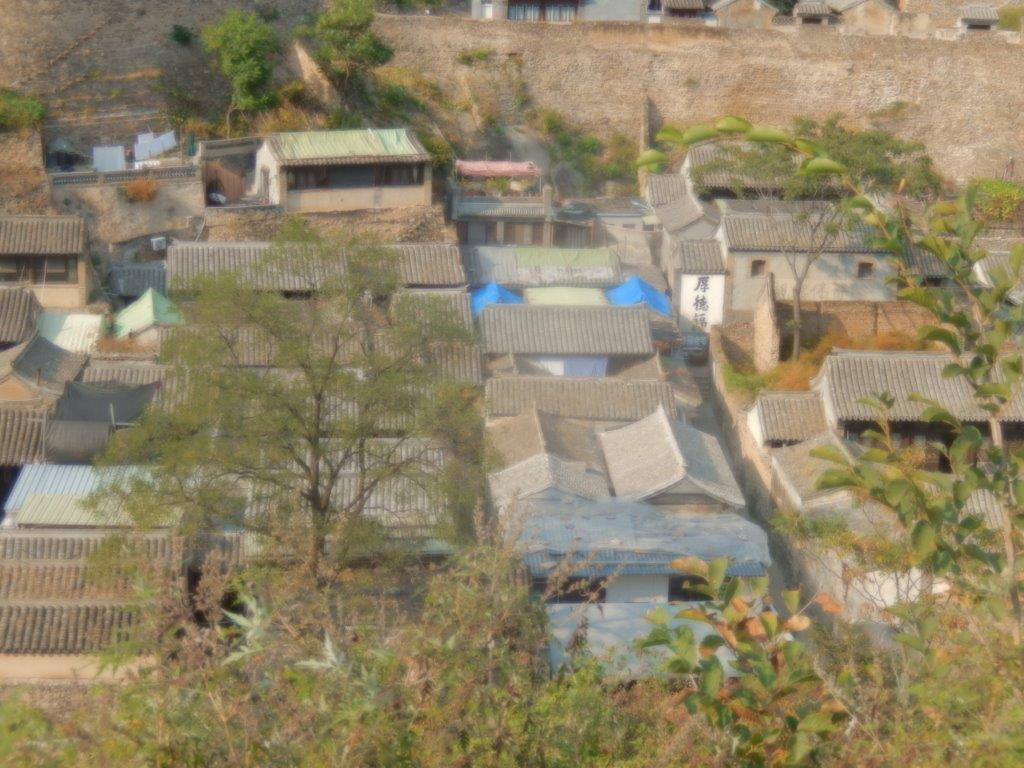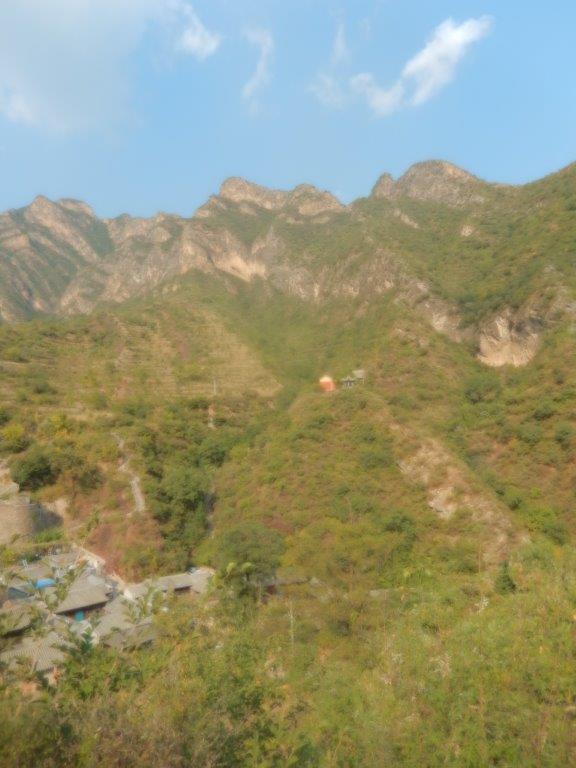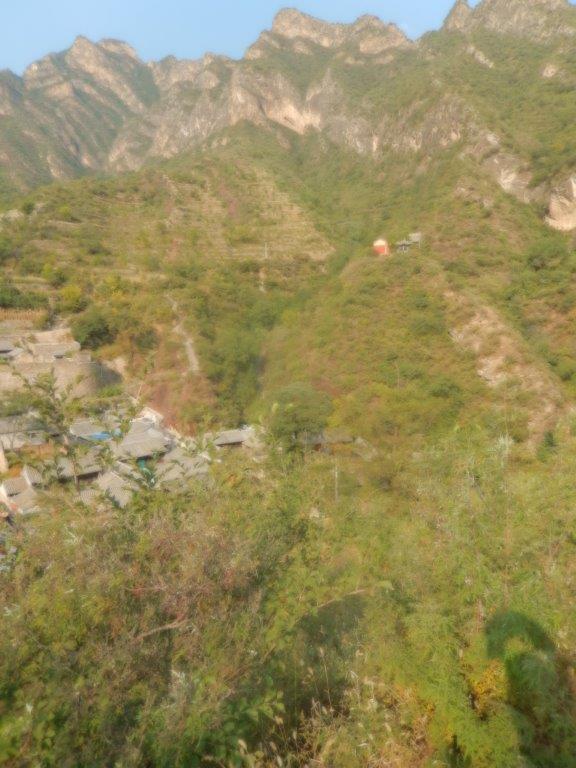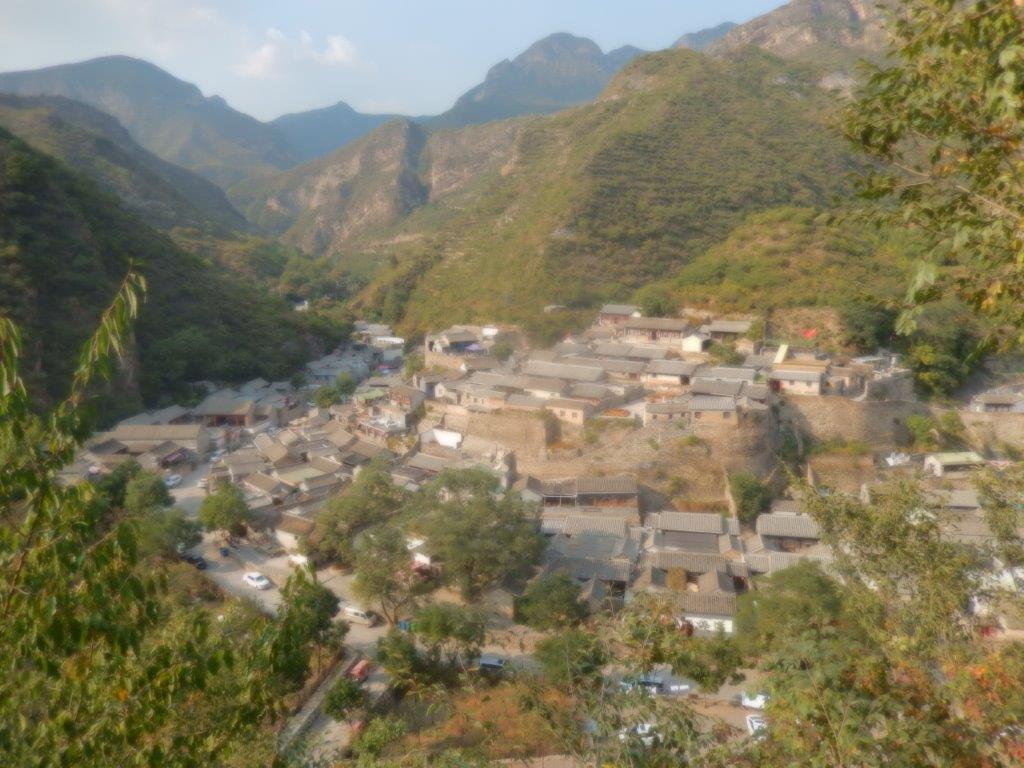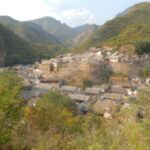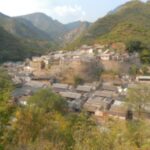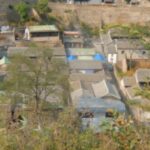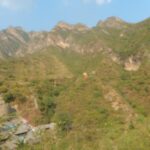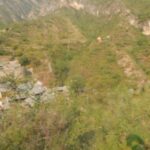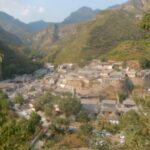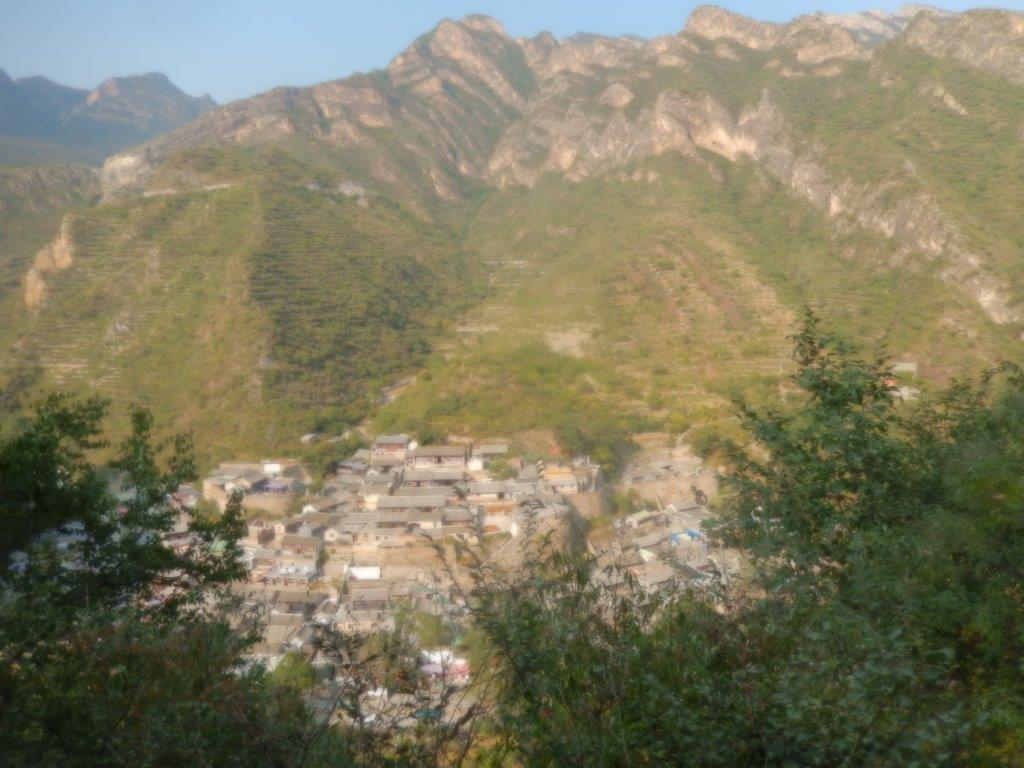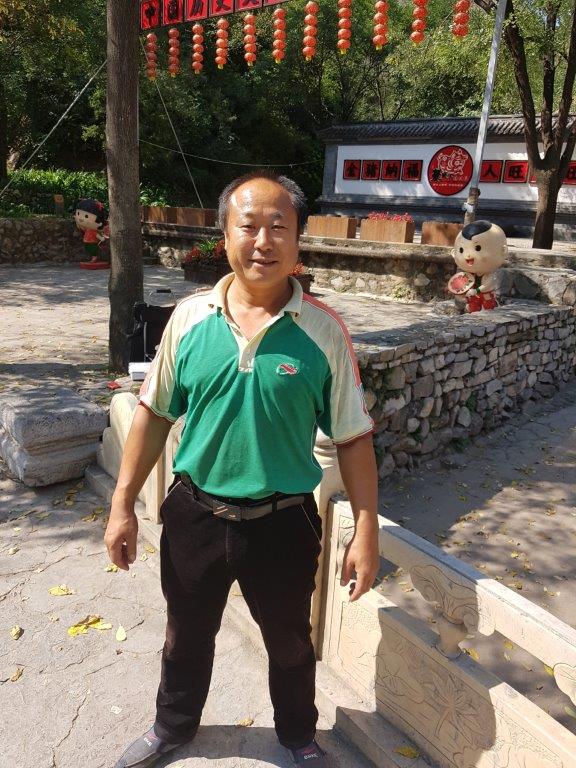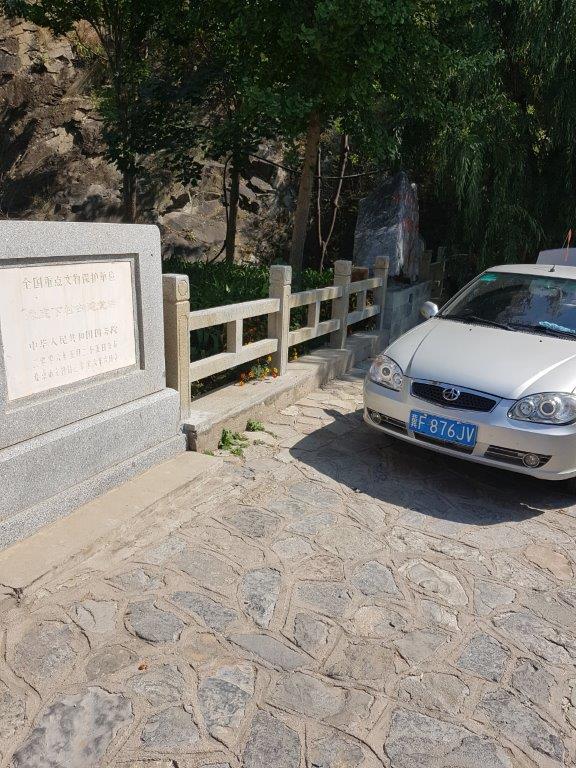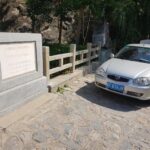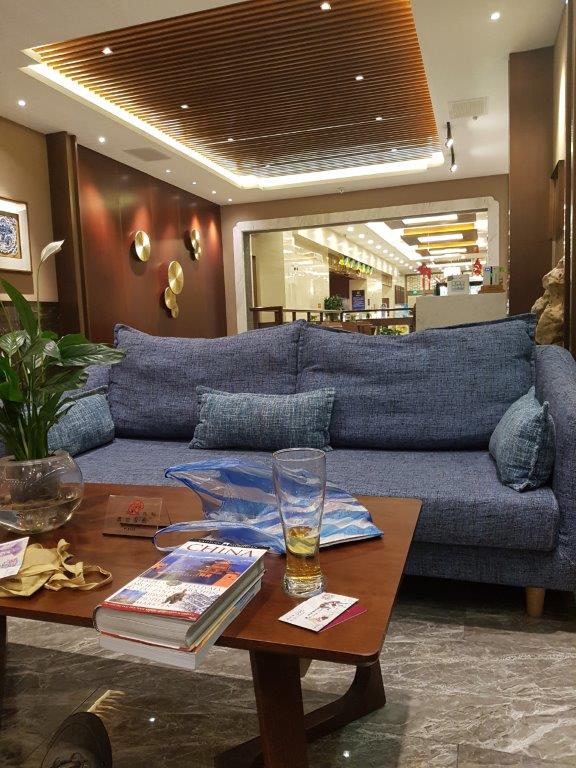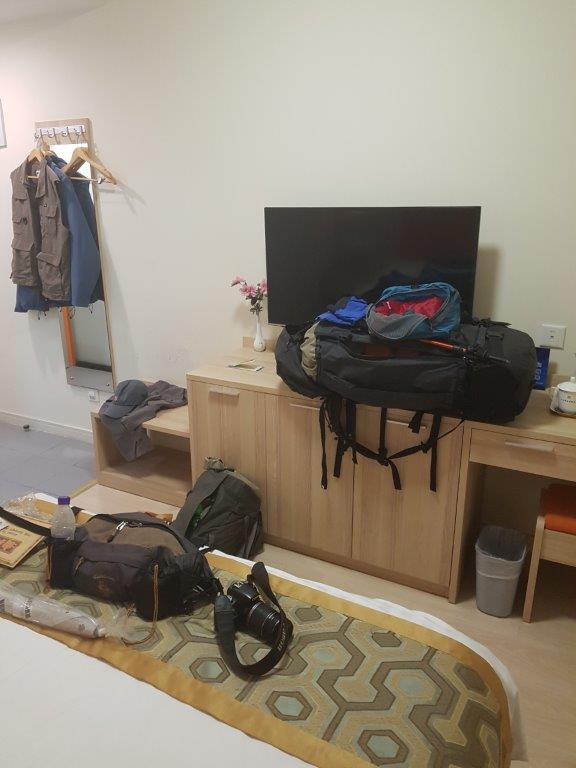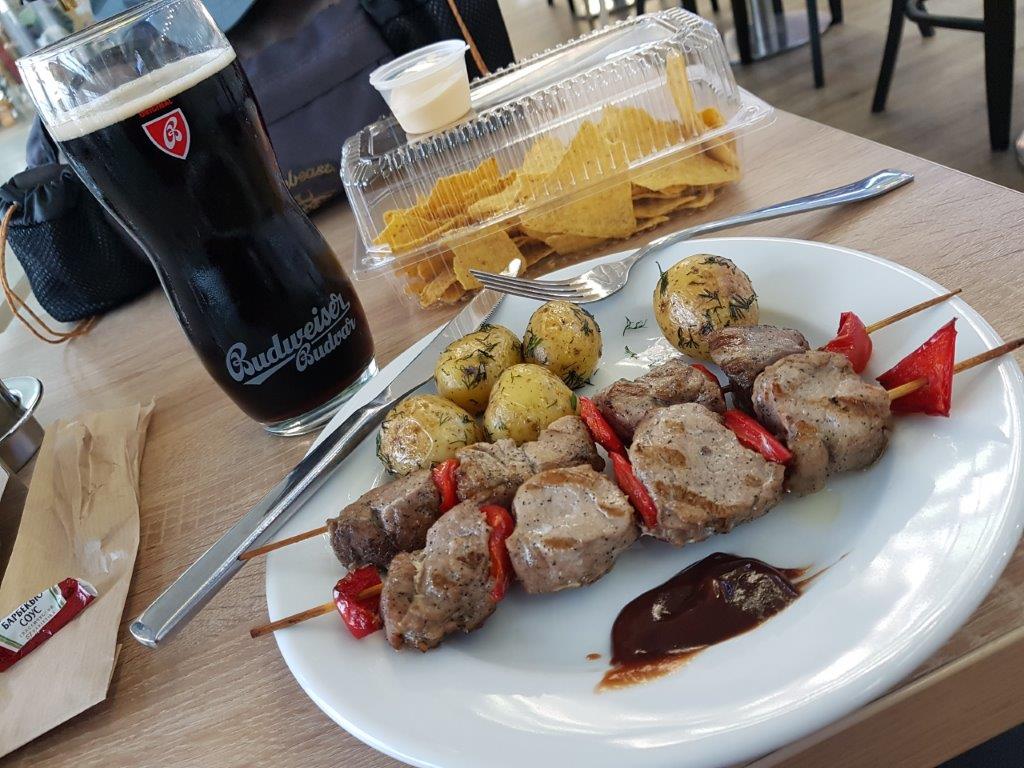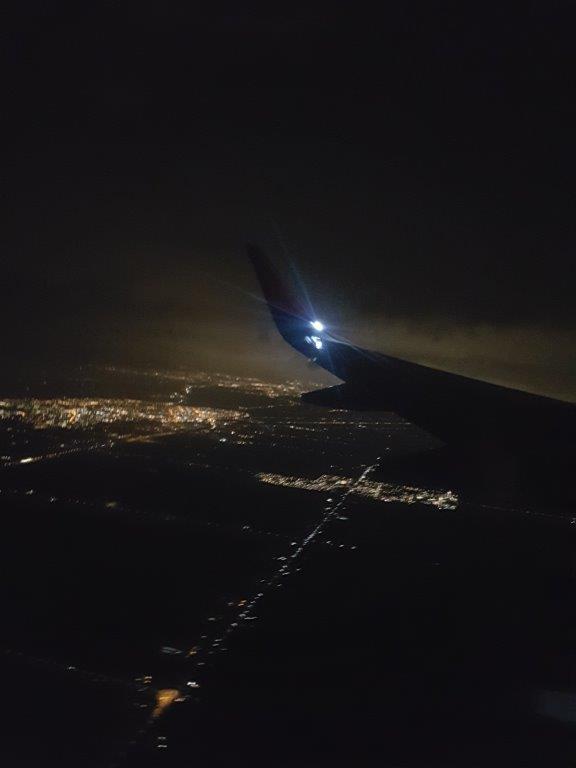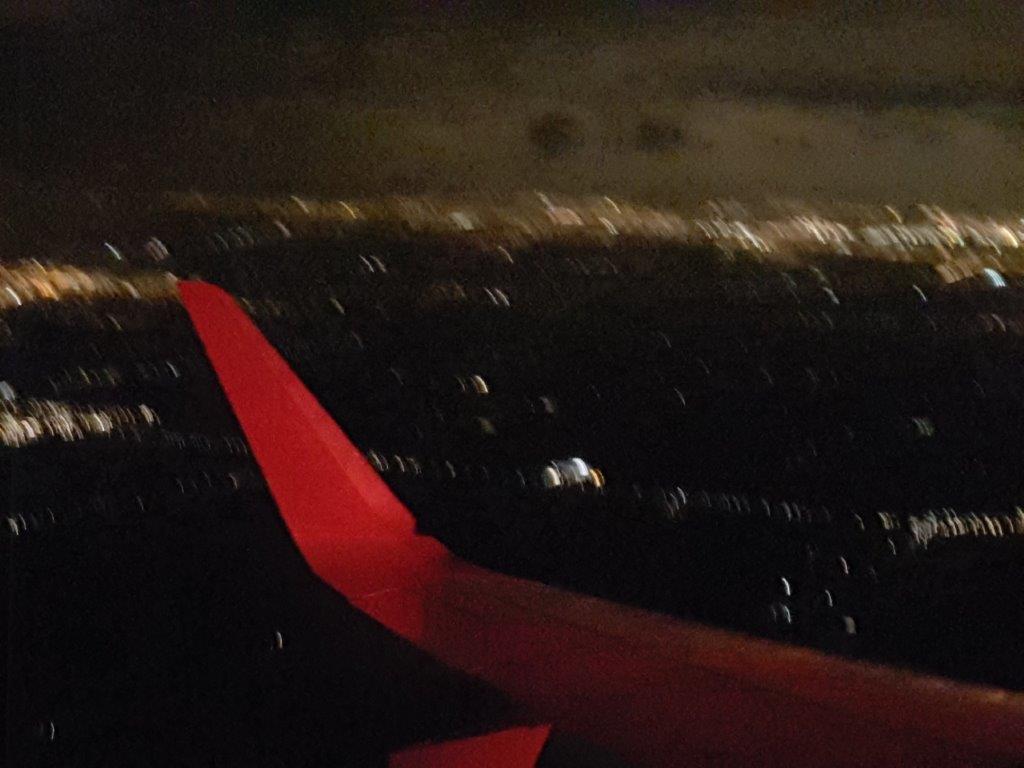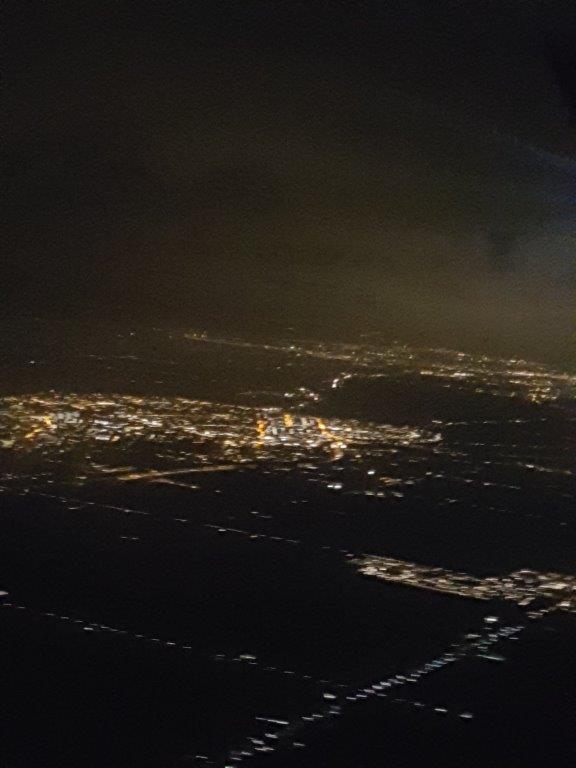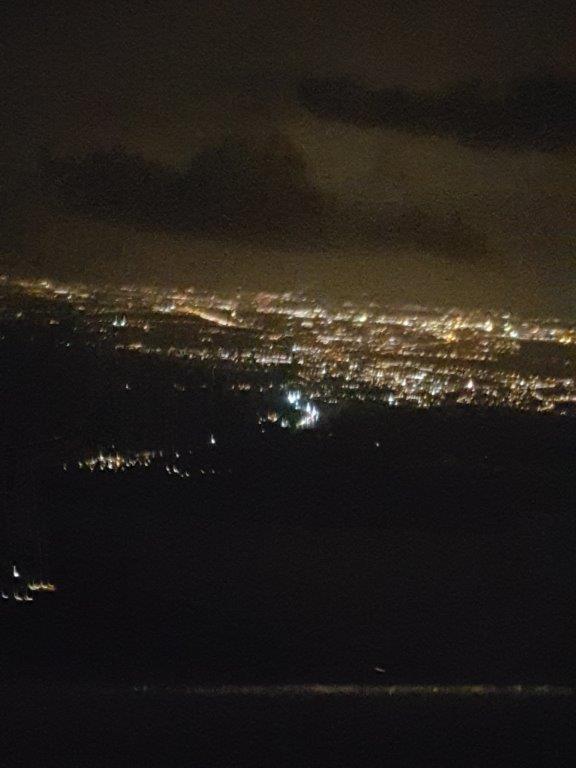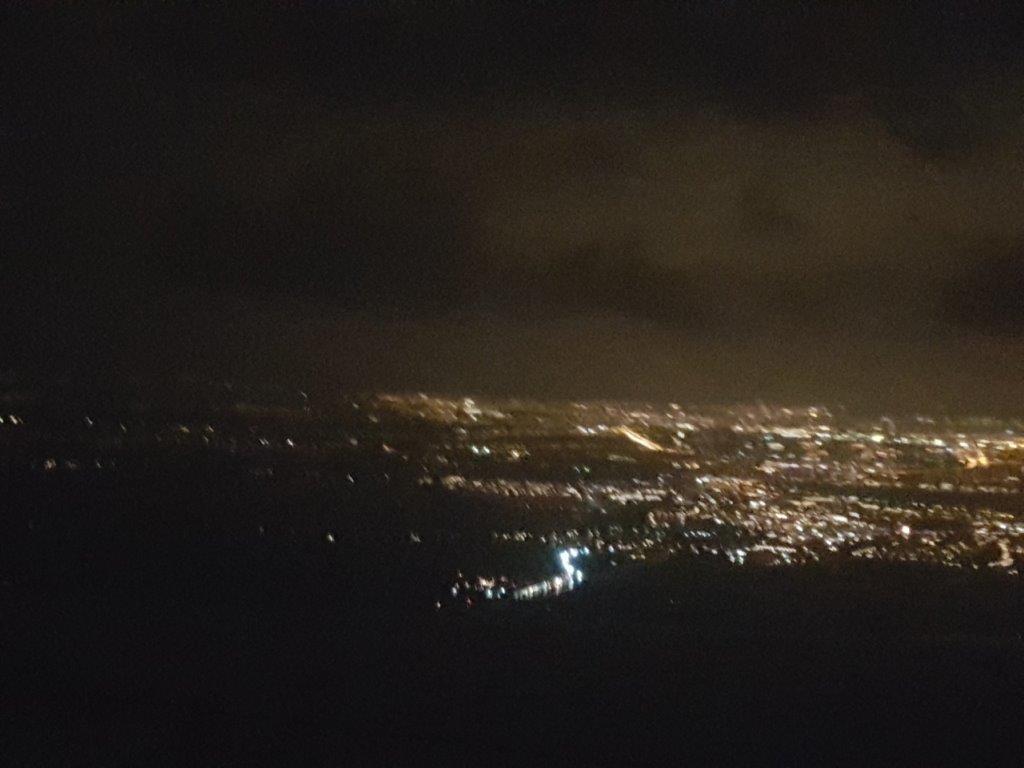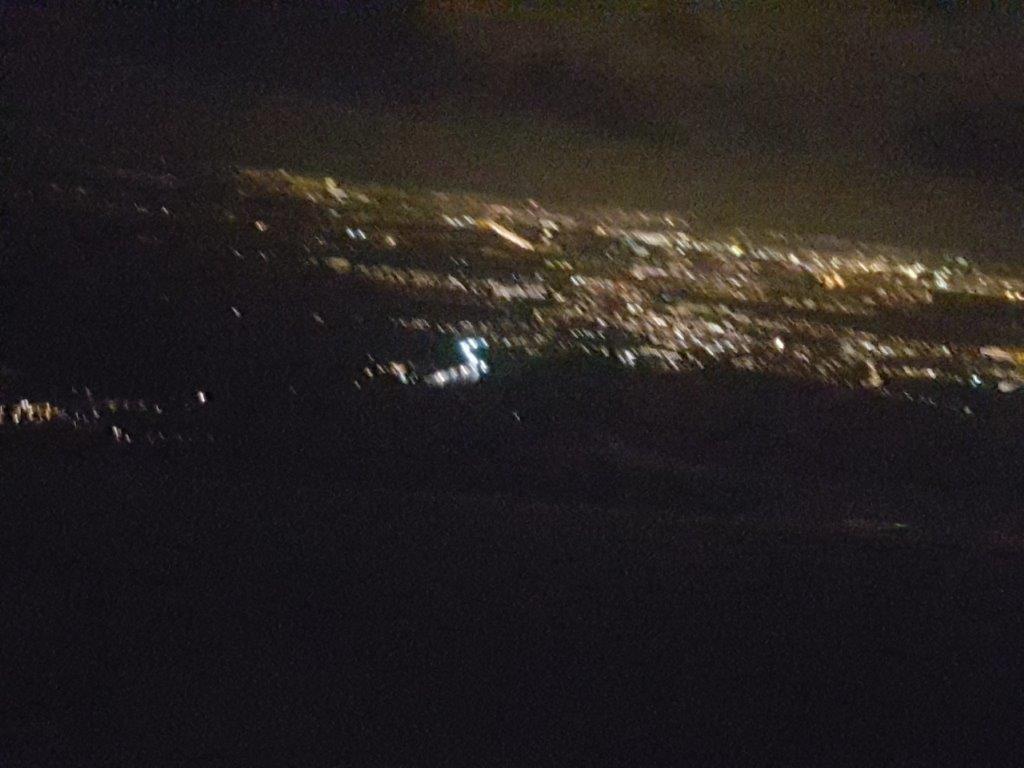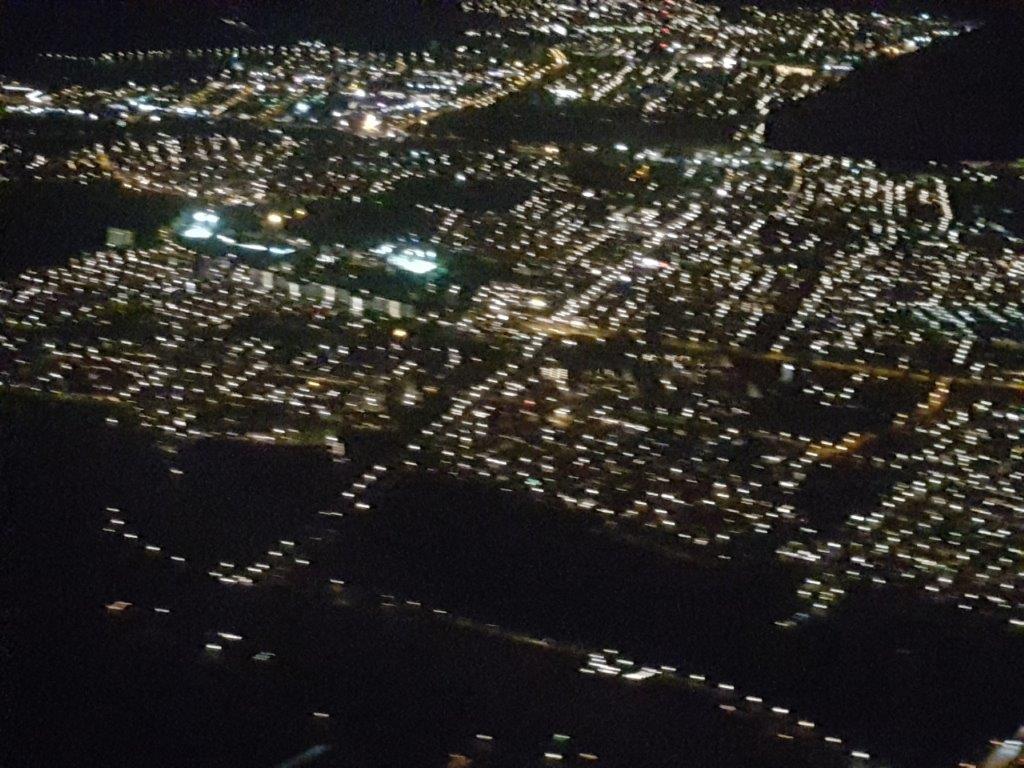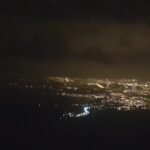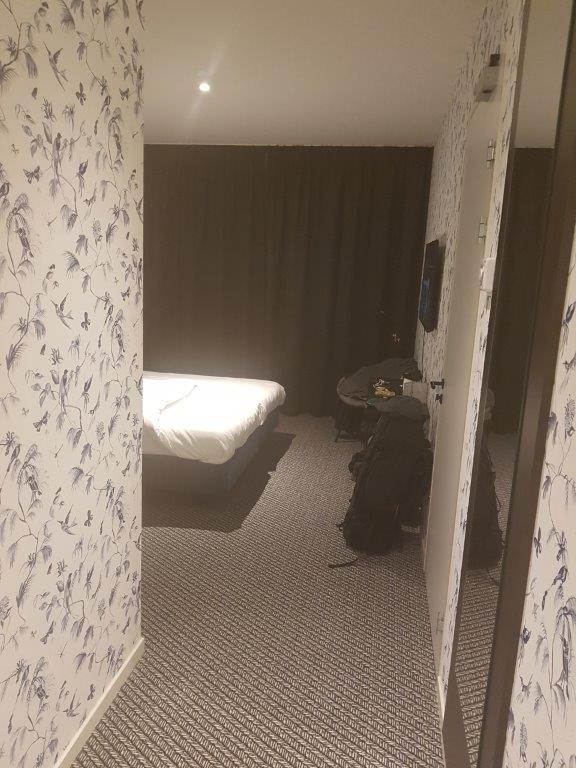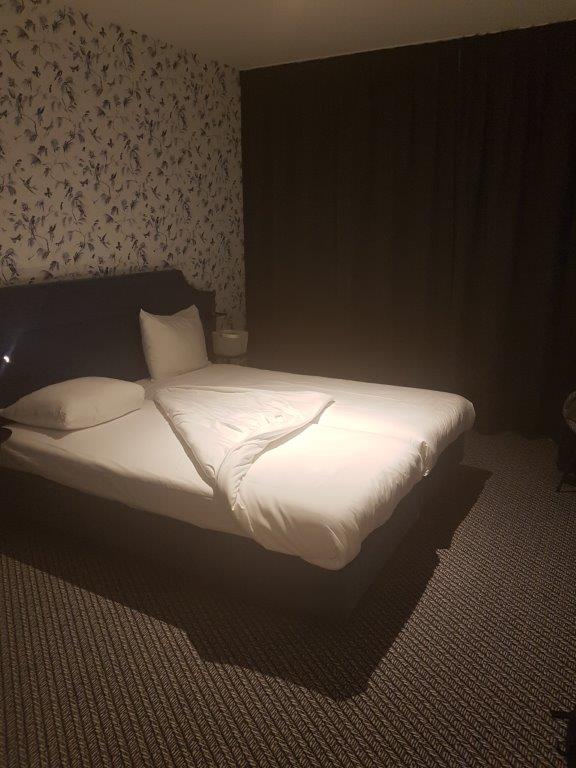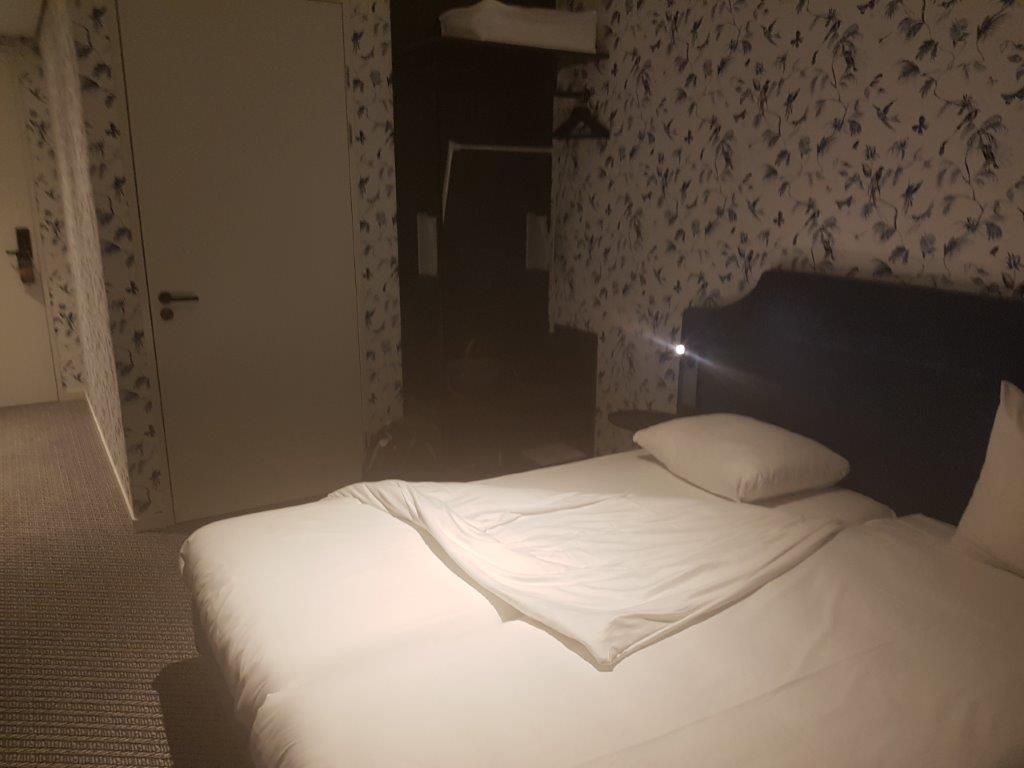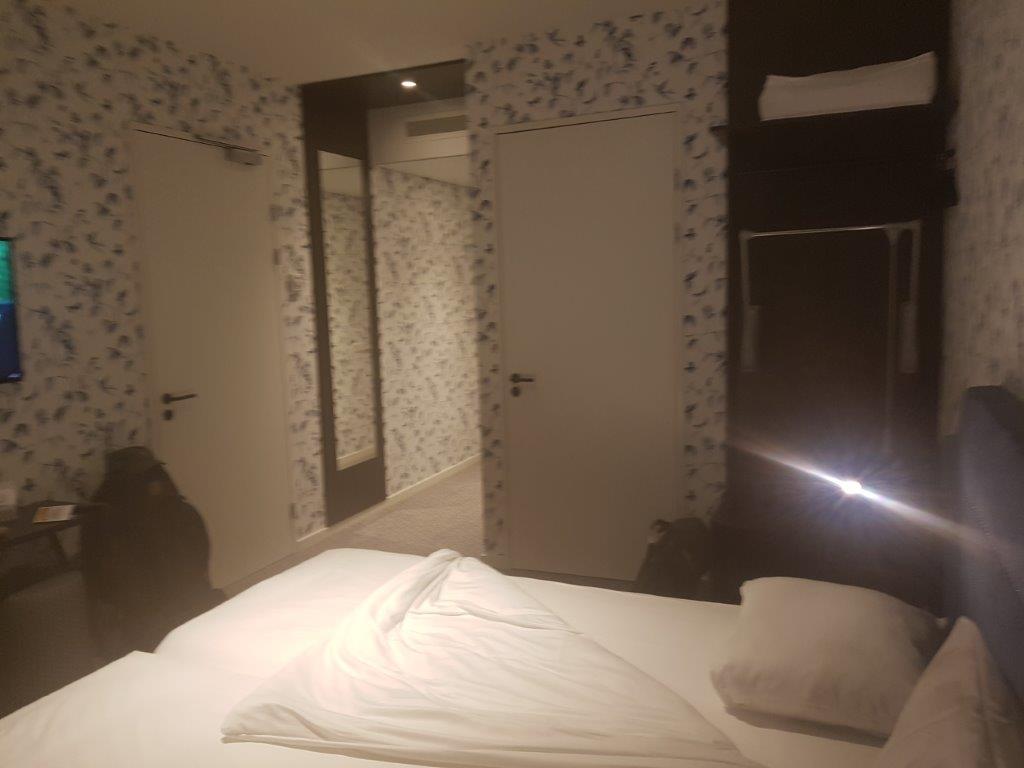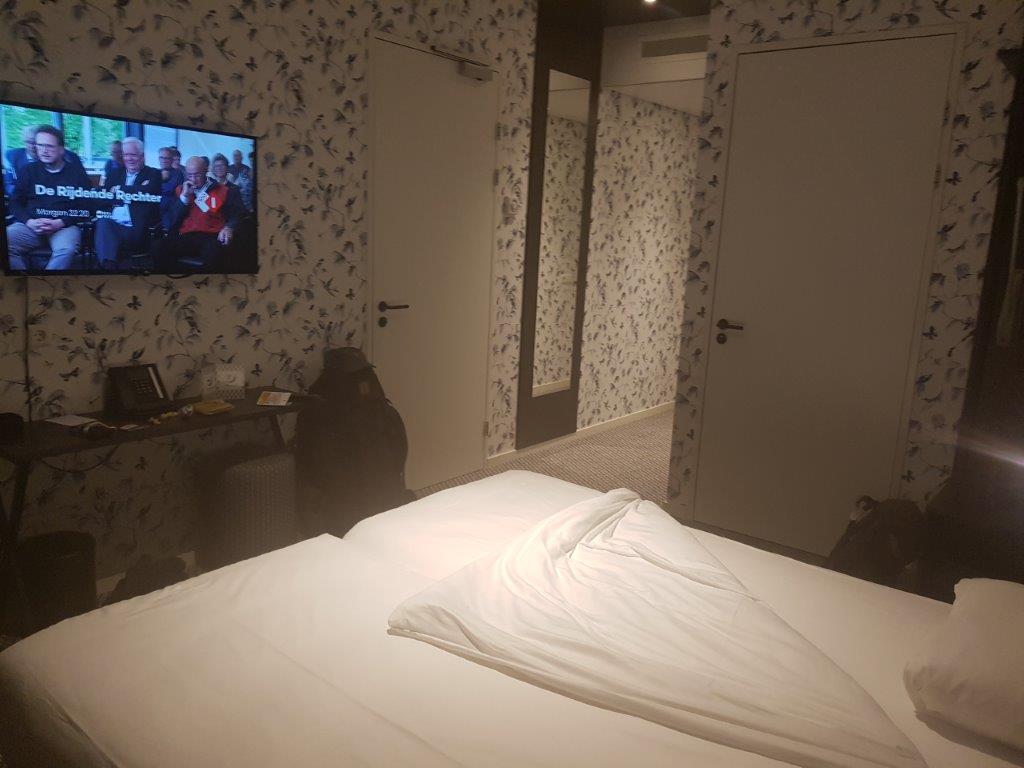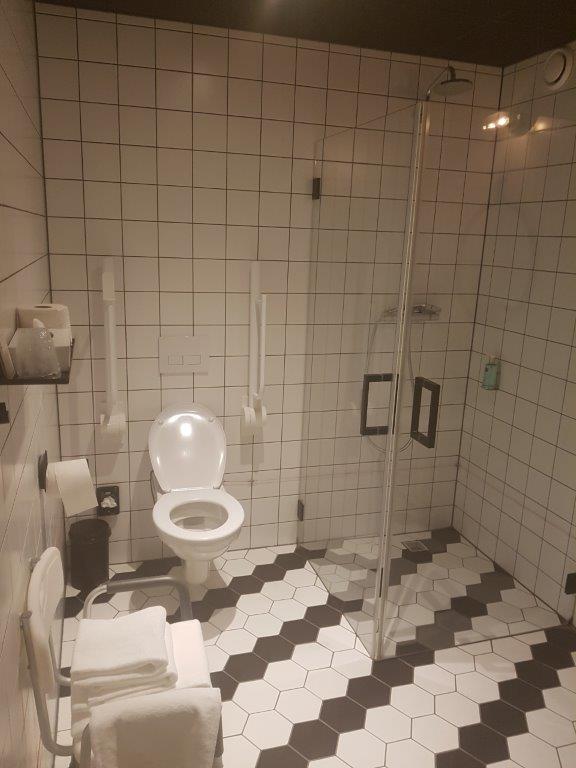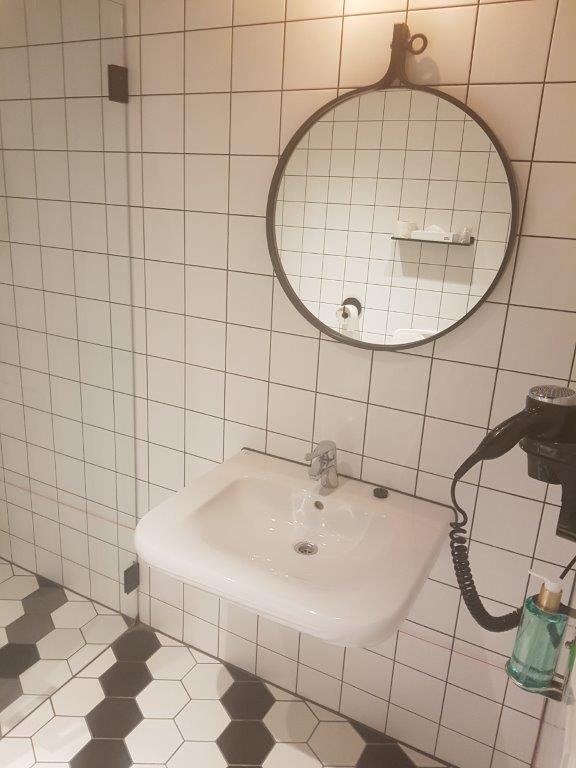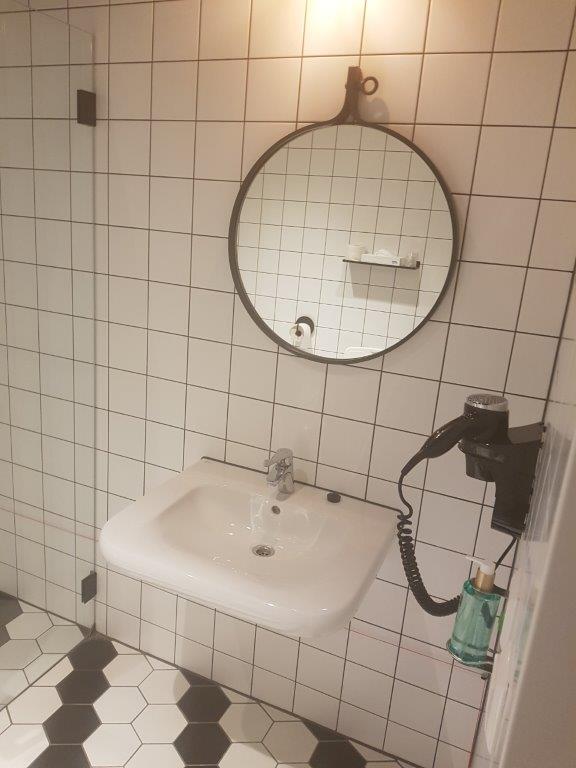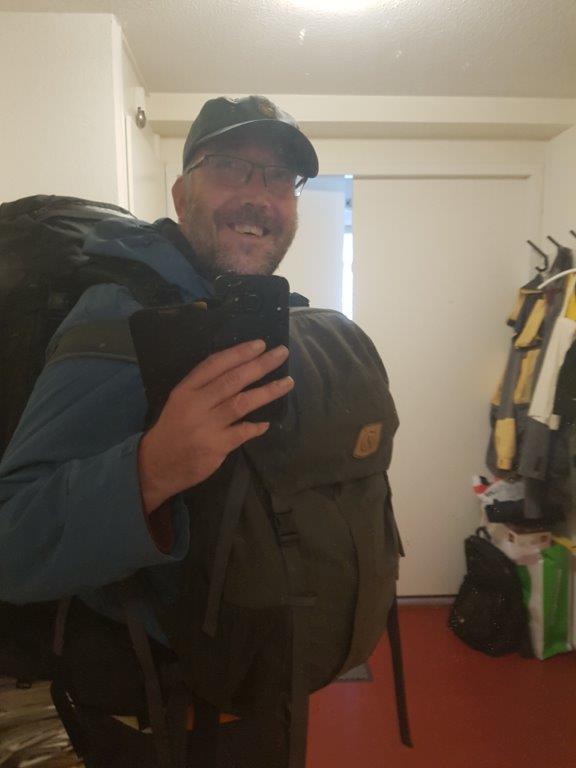Mountain walk above Cuandixia & travelling home
The old post road
Long ago, Cuandixia was only connected with the outside world by an old post road running through the village at the bottom of the valley.
This road was fairly recently changed into a paved road which attracted a lot more traffic and which had unlocked the village for travellers like backpackers and tourists.
On both sides of the post road, the terrain elevated rather quickly and on one side this occurred faster than on the other side.
Most part of the village was built on the less steeper side leaving the other side for a few more houses and for steep walking trails ascending into the forest towards multiple temples and views.
The Wandelgek passed some blooming flowers and then entered a path going up hill.
The path connected a few viewpoints and small temples dedicated to rural Gods or Goddesses, going eventually to a hilltop and a magnificent view over the village..
A simple rule applied here: The higher you climbed the better the view got…
The Wandelgek decided to follow the trail all the way…
… meanwhile enjoying the sun and the views…
The Goddess Temple
The Goddess Temple was one of the temples on the trail.
I thought it was quite special that even in a country like China, there was a special Goddess dedicated to the well-being of women. I do however think that in matters like politics and women’s rights, the West is far ahead. Maybe a Goddess like this can spark, initiate or inspire politicians to create more equal rights for women as for men in China too. Both movies by Zhang Yimou, that I mentioned in my previous blogpost (Raise the Red Lantern: Cuandixia, a Chinese village frozen in time) about Cuandixia do show that men’s rights in China are far superior to women’s rights.
Bixia Yuanjun (‘The Primordial Sovereign of the Colored Clouds of Dawn’), also known as Taishan Niangniang (‘The Lady of Mount Tai’), is the goddess of Mount Tai, childbirth and destiny in Chinese traditional religion (Taoism).
Bixia Yunjun became an important deity in China, particularly in the north during the Ming and Qing dynasties. She has also been conflated with various matron deities such as the bodhisattva Guanyin particularly in the south.
Inside was a colorful statue of a goddess on top of an altar, with flowers and offerings…
Legends
There are many legends of Bixia Yuanjun. She is a composite representation of multiple historical personalities. There are versions which depict her as a daughter of Dongyue Dadi (Grand Emperor of Mount Tai), the main deity of Mount Tai and Lord of the underworld, or alternatively the judge Yanluo conceived of as the former’s subordinate in the Chinese folk religious (or Taoist) scheme. Late Ming sources assert that Taishan Niangniang was the daughter of a commoner.
Her derelict statue was supposedly discovered on the holy mountain in the year 1008 by Emperor Zhenzong of the Song Dynasty, according to a story promoted by a 1635 guidebook.
The official Taoist hagiography of Bixia Yuanjun is contained in a text entitled History of Mount Tai, compiled by Zha Zhilong (1554-86) and included in the Wanli Emperor’s reign (1573-1620) supplement to the Taoist Canon, printed in 1607.
During the Ming and early Qing dynasties, Taishan Niangniang became one of the most popular deities in North China with her influence actively spread by Tai’an City, Shandong Province; her following extended to the Lower Yangzi region as well, and she also enjoyed significant patronage from the imperial court., particularly during the Ming and Qing dynasties. This had a great impact on the culture of northern China. As the goddess of dawn, she attends the birth of each new day from her home high in the clouds. As the goddess of childbirth, she attends the birth of children, fixing their destiny and bringing good fortune. Bixia Yuanjin is venerated in the Temple of the Purple Dawn at the summit of the holy mountain, Mount Tai, where women wishing to conceive come to ask for her help.
The trail itself was well tended. Wooden railing to protect walkers from slipping on wet stones when ascending and subsequently falling down the steep slope…
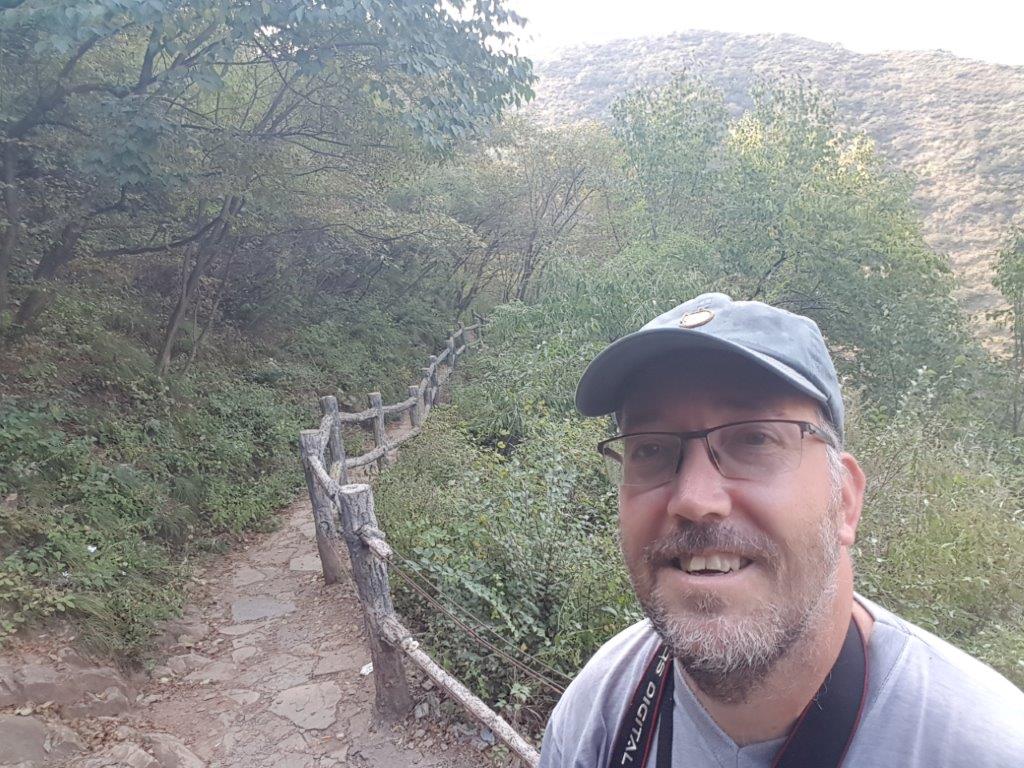 The path ascended further and further and the views got better now that the sun was descending…
The path ascended further and further and the views got better now that the sun was descending…
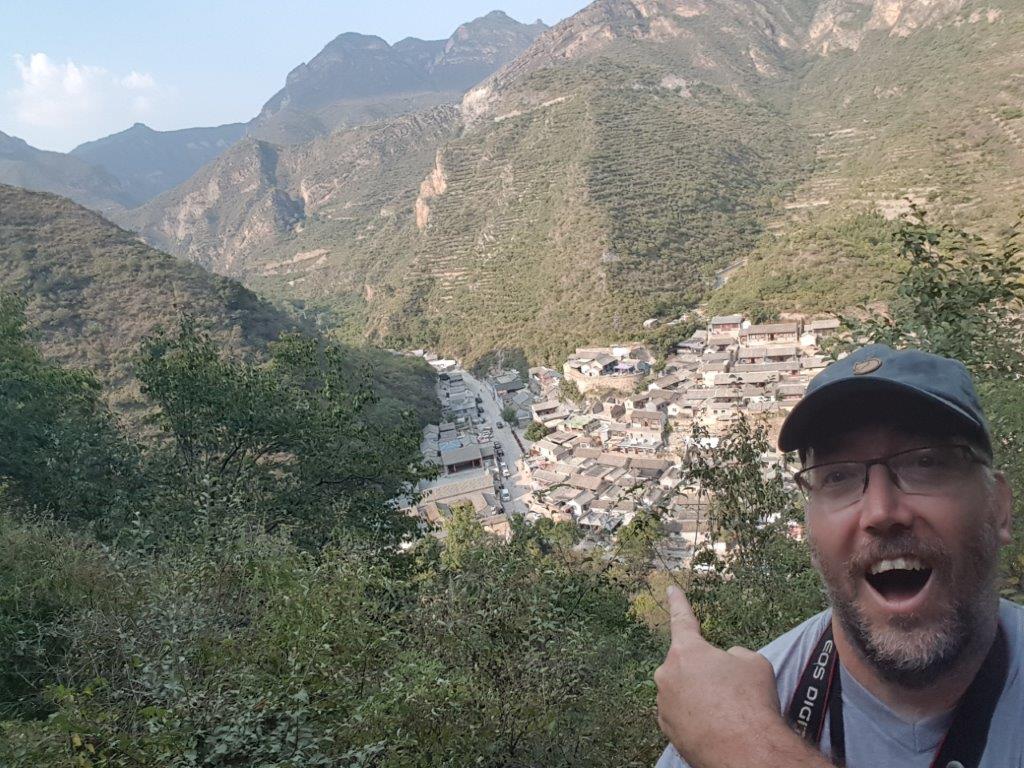 From here you could not only observe the village, but also see the temple, high above, which The Wandelgek had visited before the village…
From here you could not only observe the village, but also see the temple, high above, which The Wandelgek had visited before the village…
There were a bit creepy, eerie trees growing overhere …
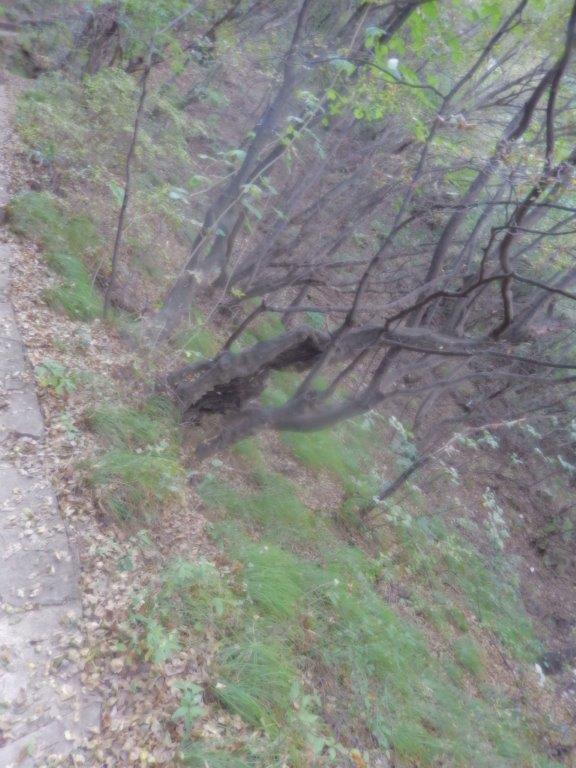 The path was well paved with occasionally some stairs. It was winding up the hill…
The path was well paved with occasionally some stairs. It was winding up the hill…
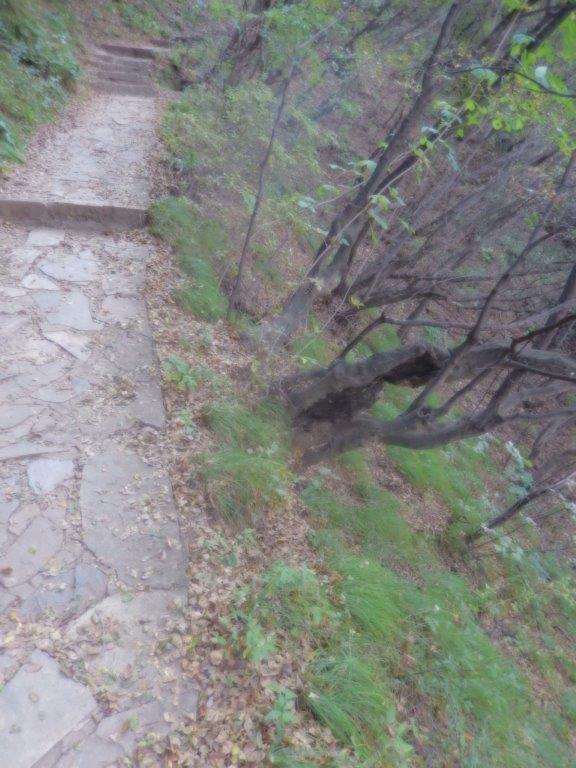 Somewhere on the path I met this chinese girl, who didn’t have good footwear to descend, so I helped her a bit further down bedore going up again …
Somewhere on the path I met this chinese girl, who didn’t have good footwear to descend, so I helped her a bit further down bedore going up again …
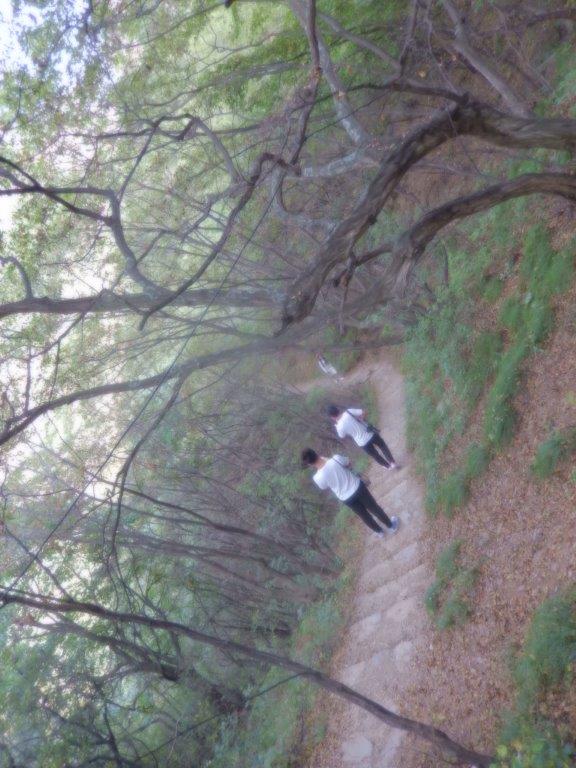 When The Wandelgek had reached the top, the view became awesome. He stayed there for a while to enjoy the view….
When The Wandelgek had reached the top, the view became awesome. He stayed there for a while to enjoy the view….
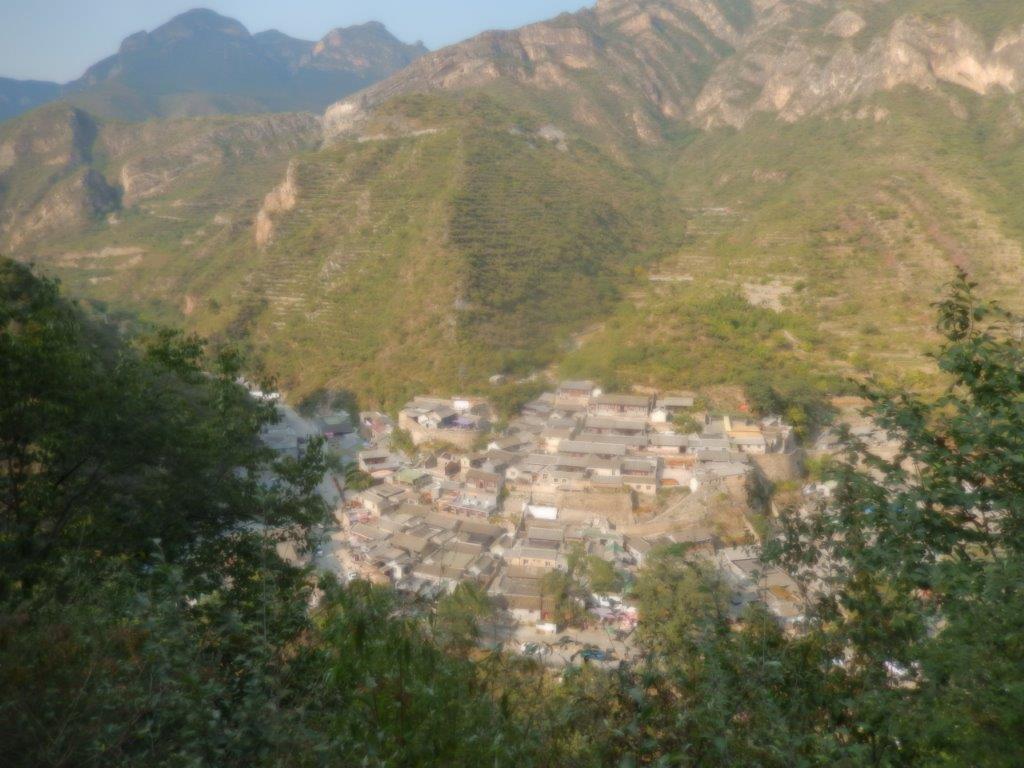 Awesome, like looking through a hole in time, into history…
Awesome, like looking through a hole in time, into history…
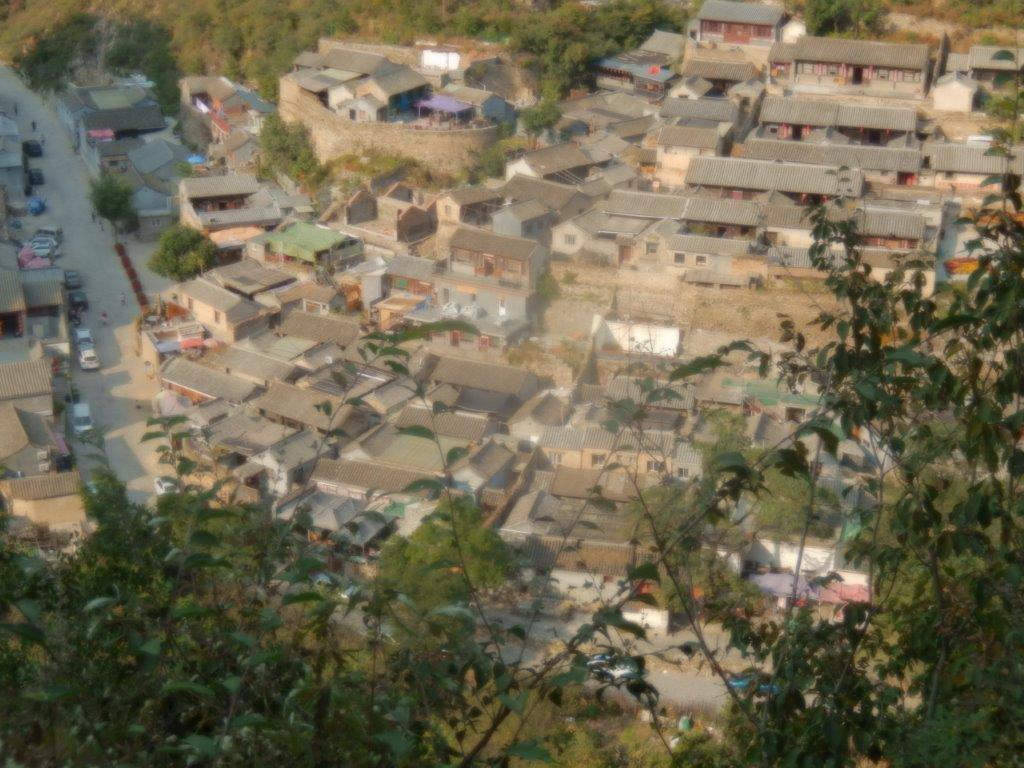 It’s incredible to know that this village is still part of the area known as Great Beijing, although it is at its utmost western border, near the province of Hebei. I mean that it is an absolute escape from the big city with its skyscrapers, traffic, noise, air pollution and large crowds. Here everything is green…
It’s incredible to know that this village is still part of the area known as Great Beijing, although it is at its utmost western border, near the province of Hebei. I mean that it is an absolute escape from the big city with its skyscrapers, traffic, noise, air pollution and large crowds. Here everything is green…
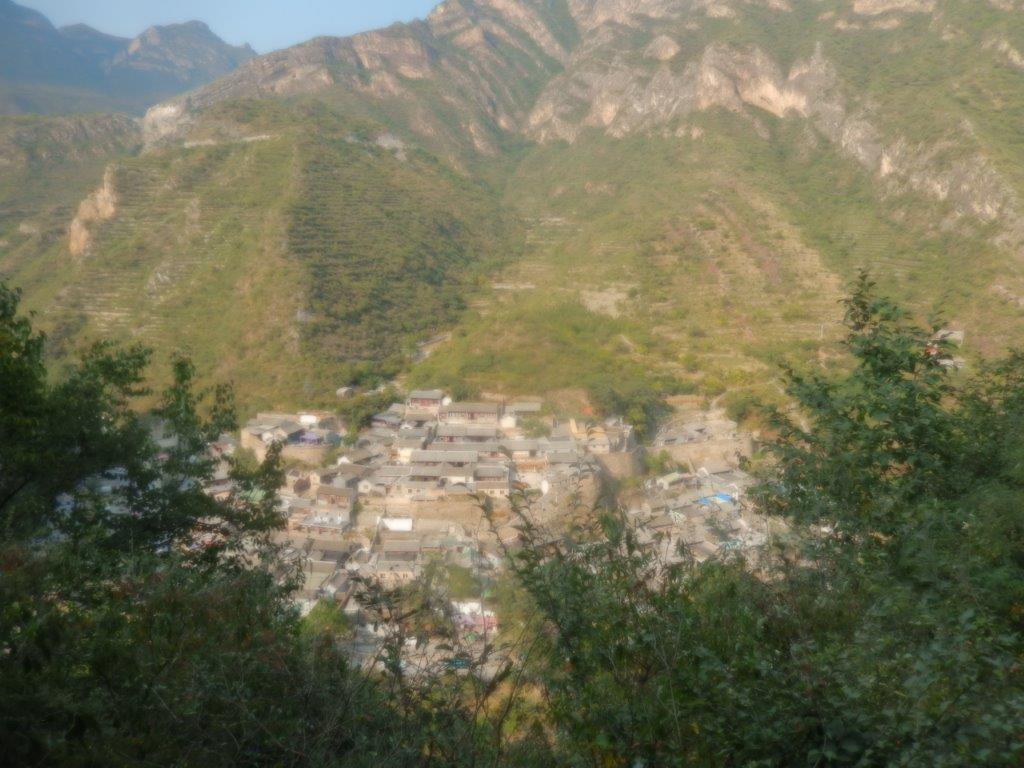 Hope you enjoyed my advebtures on the Trans Siberian and Trans Mongolian Railway which started in Moscow, crossed European Russia via Tatarstan and Kazan, crossing the great Volga river and then eastwards through the Ural mountains to Yekaterinburg, before entering Siberia. Subsequently the journey entered the West Siberian Lowlands, passing through Omsk and Novosibirsk crossing the mighty rivers Irtysh and Ob and then into the Central Siberian Highland passing Krasnoyarsk and Irkutsk, crossing even mightier rivers likr the Angara and of course the Yenisey, before visiting Lake Baikal. Subsequently the train crossed Mongolia, via Ulaanbaatar, through the vast Gobi desert to the Chinese border. But before reaching Ulaanbaatar The Wandelgek unboarded for a long roadtrip through northern and central mongolia, visiting Dzjengis Kahn’s former capital as well as some Mongolian nomads in their gers. Then at the end of his travels he visited Beijing and did some solo travel in the area. A journey never to forget.
Hope you enjoyed my advebtures on the Trans Siberian and Trans Mongolian Railway which started in Moscow, crossed European Russia via Tatarstan and Kazan, crossing the great Volga river and then eastwards through the Ural mountains to Yekaterinburg, before entering Siberia. Subsequently the journey entered the West Siberian Lowlands, passing through Omsk and Novosibirsk crossing the mighty rivers Irtysh and Ob and then into the Central Siberian Highland passing Krasnoyarsk and Irkutsk, crossing even mightier rivers likr the Angara and of course the Yenisey, before visiting Lake Baikal. Subsequently the train crossed Mongolia, via Ulaanbaatar, through the vast Gobi desert to the Chinese border. But before reaching Ulaanbaatar The Wandelgek unboarded for a long roadtrip through northern and central mongolia, visiting Dzjengis Kahn’s former capital as well as some Mongolian nomads in their gers. Then at the end of his travels he visited Beijing and did some solo travel in the area. A journey never to forget.
Conclusions
Well this was The Wandelgek’s 3rd visit to China after he previously visited Tibet in 1999 and Xinjiang in 2004. This visit was the shortest of the 3 but still a very rememberable one. The train journey through China is always impressive, because the landscapes are sooooo diverse. His solo travels to Beijing brought him to The Great Wall, the former Emperor’s Summer Palace and to a tiny mountain village frozen in time. China is still the most beautiful country The Wandelgek ever visited and he again felt the willingness of its citizens to help foreigners in need to travel through their beautiful country. Of course there are also the downsides of living in China which is ruled by an autocratic regime. As a traveller you do not experience a lot of the restrictions which the government poses upon its citizens, but still you do need to be aware of certain things. Travelling into China means you need to give access for government officials to your mobile phone/smartphone and to social media whenever they ask to gain that access. Yes you need to provide them with userID’s and passwords. At the border crossings they did not ask for those, but when I wanted to make a free wifi connection in my hotel they did. So prepare yourself for that, either by installing a vpn network before travelling (not when you’re already in China, because you need an internet/wifi connection to do that) and/or use a virgin/new mobile phone when entering China (a phone which does not have access to work related stuff and only to a vigin email box, ercetera). Leave your other mobile phone at home! When The Wandelgek travelled through Tibet and later Xinjiang, he already noticed that Tibetans and Uyghurs were not treated as equals to Chinese (Han), but the situation since has deteriorated and I’m not supporting in any ways the current regime policy towards e.g. the Uyghurs and absolutely denounce the assimilation strategy that tgey currently execute. Still I believe in travelling, also to countries which do not hold the western democratic values. I think a country and its people is not equal to its government.
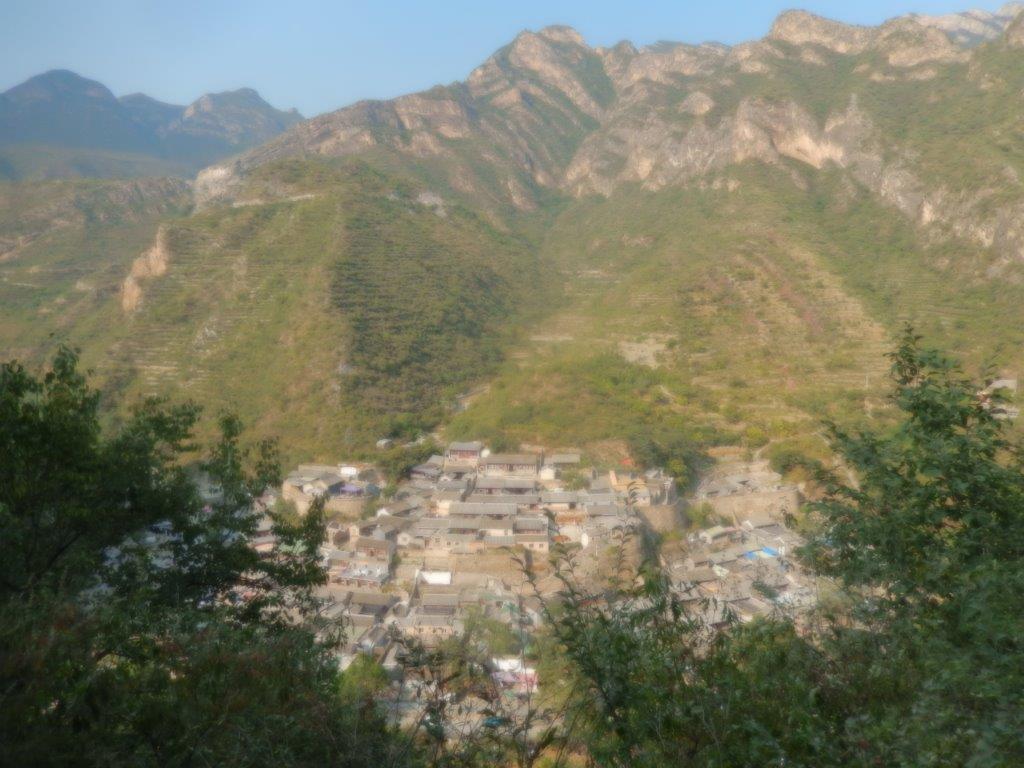 After a last view over Cuandixia, The Wandelgek descended to the post road and there his cab driver had arrived to pick him up and return him to Zhaitang.
After a last view over Cuandixia, The Wandelgek descended to the post road and there his cab driver had arrived to pick him up and return him to Zhaitang.
In Zhaitang he had to wait a bit for the bus before driving back to Pingguoyuan tube station. This drive was cost him half of the time, because it was downhill almost all the way…
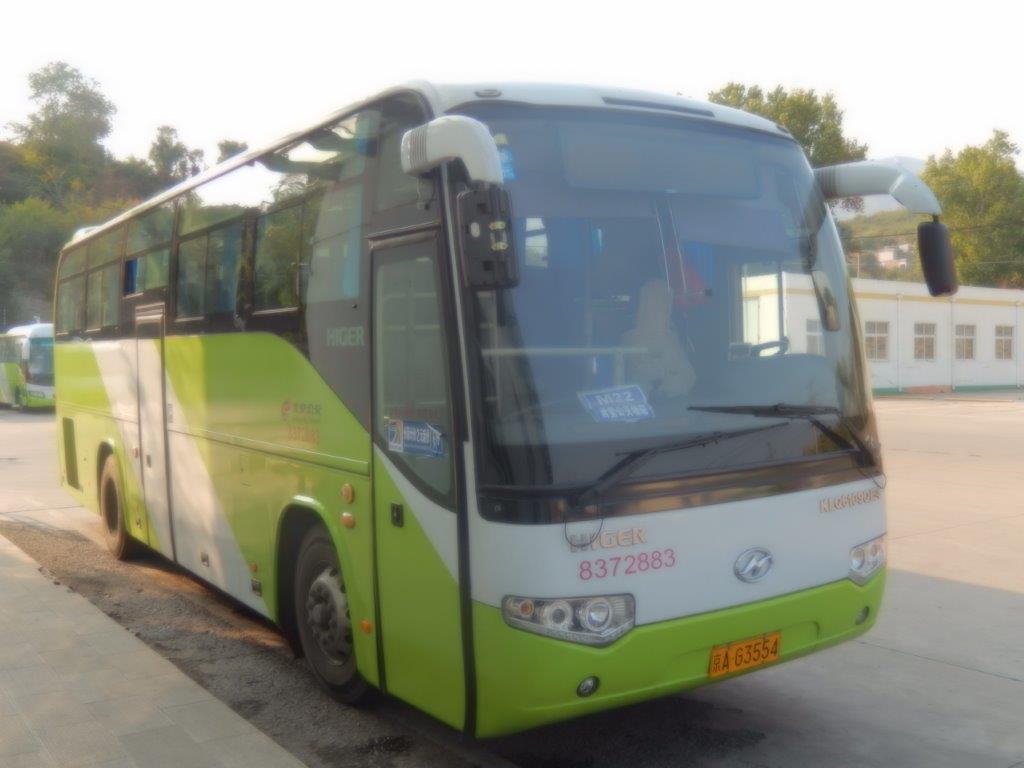 From Pingguoyuan tube station he took the metro towards Central Beijing and then to Taoranting tube station from where he walked back to his hotel, where he had a last dinner and some drinks, before returning to his hotelroom to pack his backpack.
From Pingguoyuan tube station he took the metro towards Central Beijing and then to Taoranting tube station from where he walked back to his hotel, where he had a last dinner and some drinks, before returning to his hotelroom to pack his backpack.
Next day he was up early and checked out from the hotel. He quickly had breakfast…
 …because a cab driver would be there early to pick him up and transport him to the international airport of Beijing.
…because a cab driver would be there early to pick him up and transport him to the international airport of Beijing.
The return flight was not a direct flight but was via Moscow, where he arrived in the afternoon…
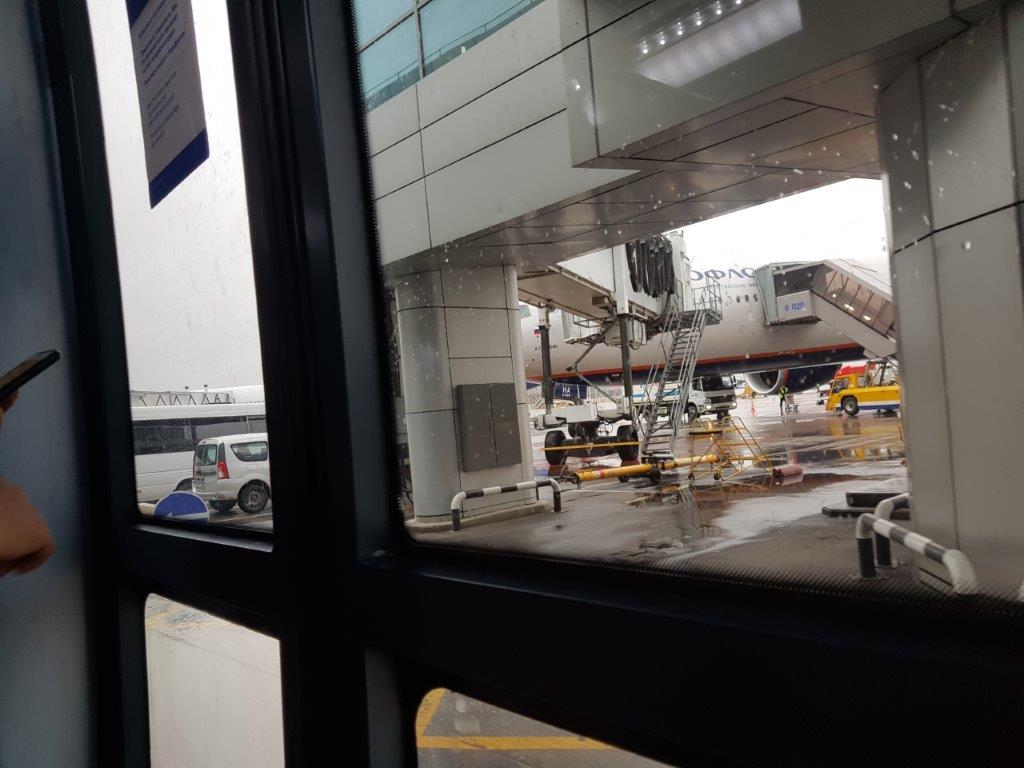 and where he had a transfer on a flight towards Amsterdam.There was plenty (about 4 hrs) of time for a good dinner and a Guinness…
and where he had a transfer on a flight towards Amsterdam.There was plenty (about 4 hrs) of time for a good dinner and a Guinness…
It was already dark and also raining when The Wandelgek boarded for Amsterdam…
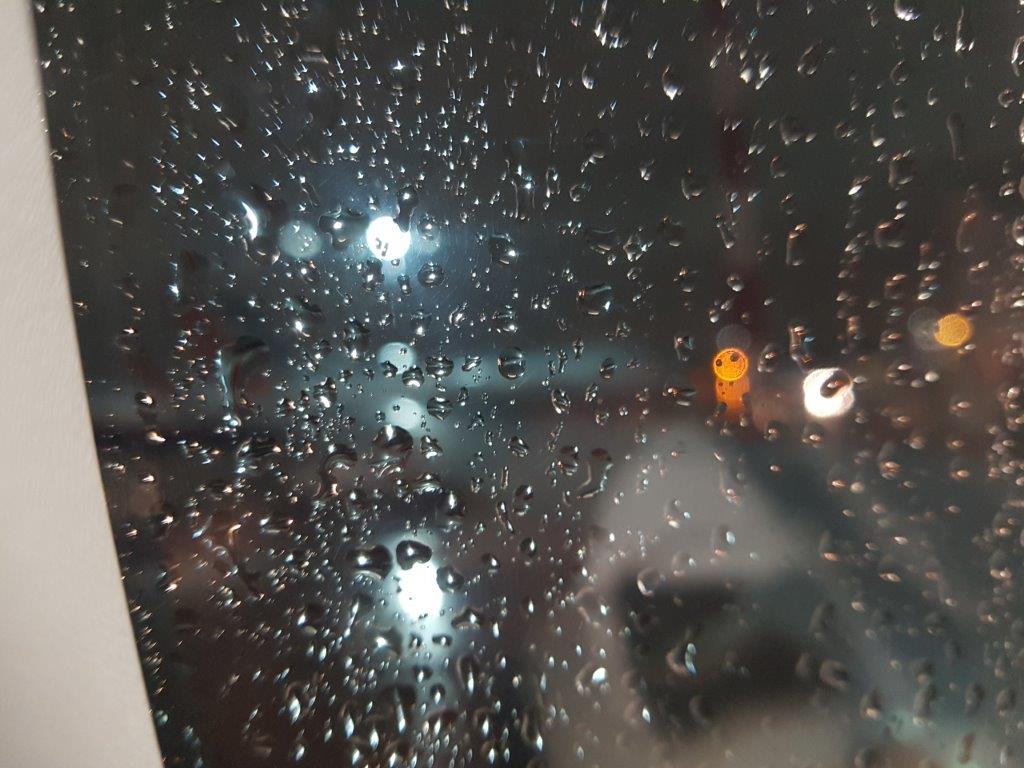 Arrival at Amsterdam was far after sunset but night views of the city, ablaze with lights was quite spectacular.
Arrival at Amsterdam was far after sunset but night views of the city, ablaze with lights was quite spectacular.
The Wandelgek was too late for transport to hus home, but he had arranged for another stay in a hotel near the airport.
First however, The Wandelgek had a specialty beer to celebrate finishing another long dreamed of travel experience on the Trans Siberian Express.
He decided to skip showering and go for an immediate dive into the bed.
Next morning he had a long shower…
… and a good sturdy breakfast…
…before finally travelling home by train.

